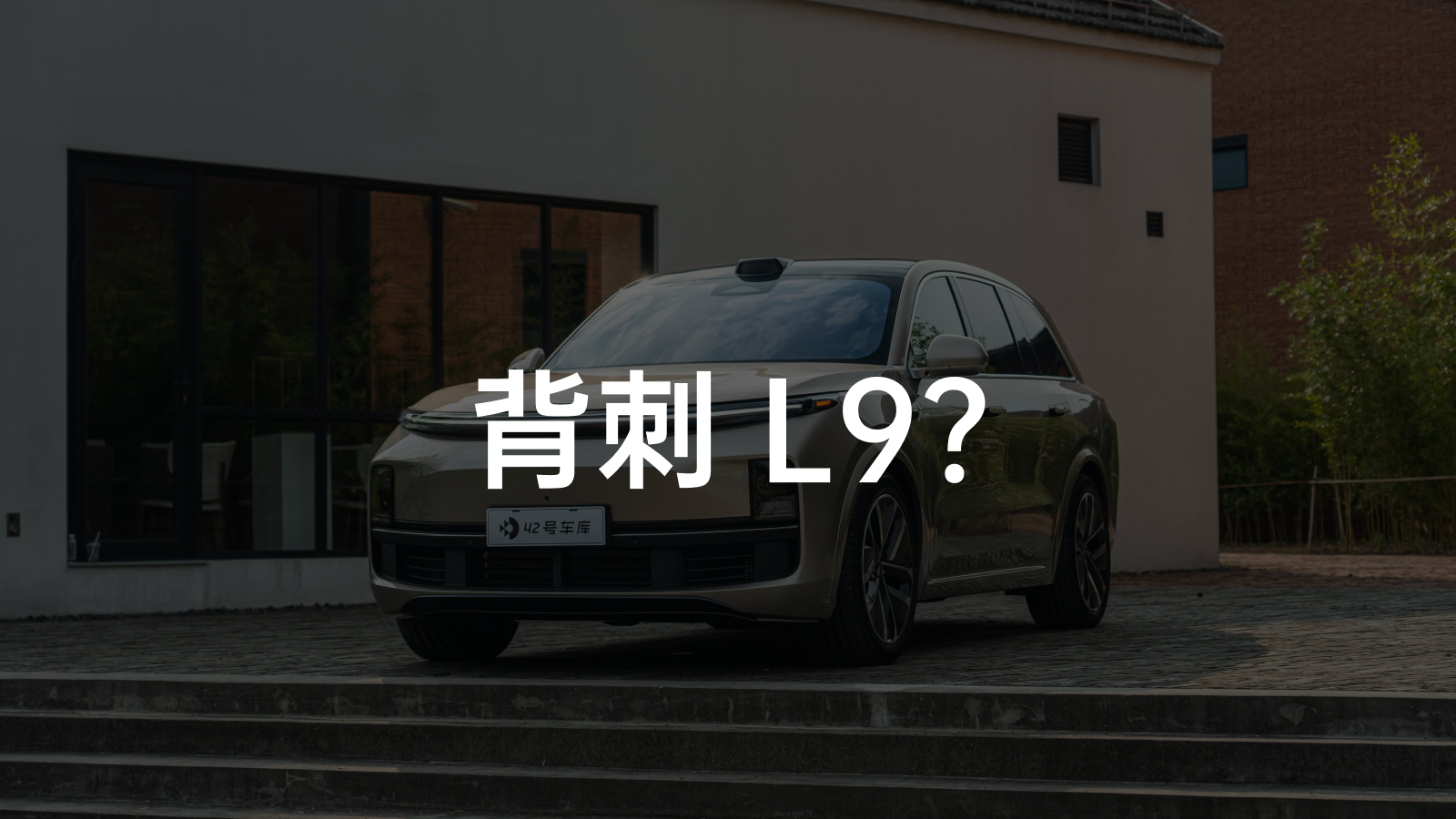Today, IDEAL officially released its third car model, the IDEAL L8, which is also the second model in the L series and the successor of IDEAL ONE.
IDEAL abandoned the previous single series configuration strategy for IDEAL ONE and L9, dividing the L8 into two models, the L8 Max and L8 Pro, with prices of 359,800 yuan and 399,800 yuan, respectively.
Li Xiang also released the L7 model directly, dividing it into the Pro and Max models with prices of 339,800 yuan and 379,800 yuan, respectively, in the “One More Thing” segment with no warning.
Before the launch, we had the opportunity to experience the IDEAL L8 Max model in Shanghai in advance.
We had reported in the article “IDEAL L8 Officially Announced to be Released on September 30th! Has the Five-seat Version become L7?” that IDEAL had planned and organized its products as follows:
-
IDEAL L9 is a flagship six-seat SUV, with a full-size ranking and a price of less than 500,000 yuan;
-
IDEAL L8 is also a six-seat SUV, with a medium to large size ranking and a price of less than 400,000 yuan;
-
IDEAL L7 is a five-seat SUV with a medium to large size ranking, with a price of less than 400,000 yuan;
-
IDEAL L6 is a five-seat SUV, currently the smallest in the IDEAL SUV spectrum, with a medium size ranking. The price is also less than 300,000 yuan.
Considering the length of this article, we will start with the following sections for explanation:
I. Exterior
II. Space + Configuration
III. Interior
IV. Cabin
V. Advanced Driving Assistance Systems (ADAS)
VI. Powertrain
Of course, for a review of the IDEAL L9 model, please click: “The Strongest Cabin? 8,000 Words Pixel-Level In-Depth Review of the IDEAL L9.” For a comparative review of the L8 Max, please click: “Facing New Energy Pure Electric and Million-Yuan Fuel Vehicles, How Can the IDEAL L8 Compete?”.
Exterior: A Smaller Version of the L9
Last year, IDEAL clearly showed its product planning for the future in its prospectus submitted to the Hong Kong Stock Exchange.

X’s first car model on the extended platform, the full-size L9 Ideal, has begun delivery. As the successor to the Ideal ONE on this platform, the second car model L8 has finally stepped onto the stage.
L8’s exterior was already listed in the MIIT catalogue in September this year, and we have reported on it: Ideal L8 officially exposed, listed in the MIIT catalogue.
Whether it’s the MIIT’s flat images or the actual car we’re seeing now, I have only four words to describe the exterior: L9 Miniature. Here are some pictures to give you a better sense:


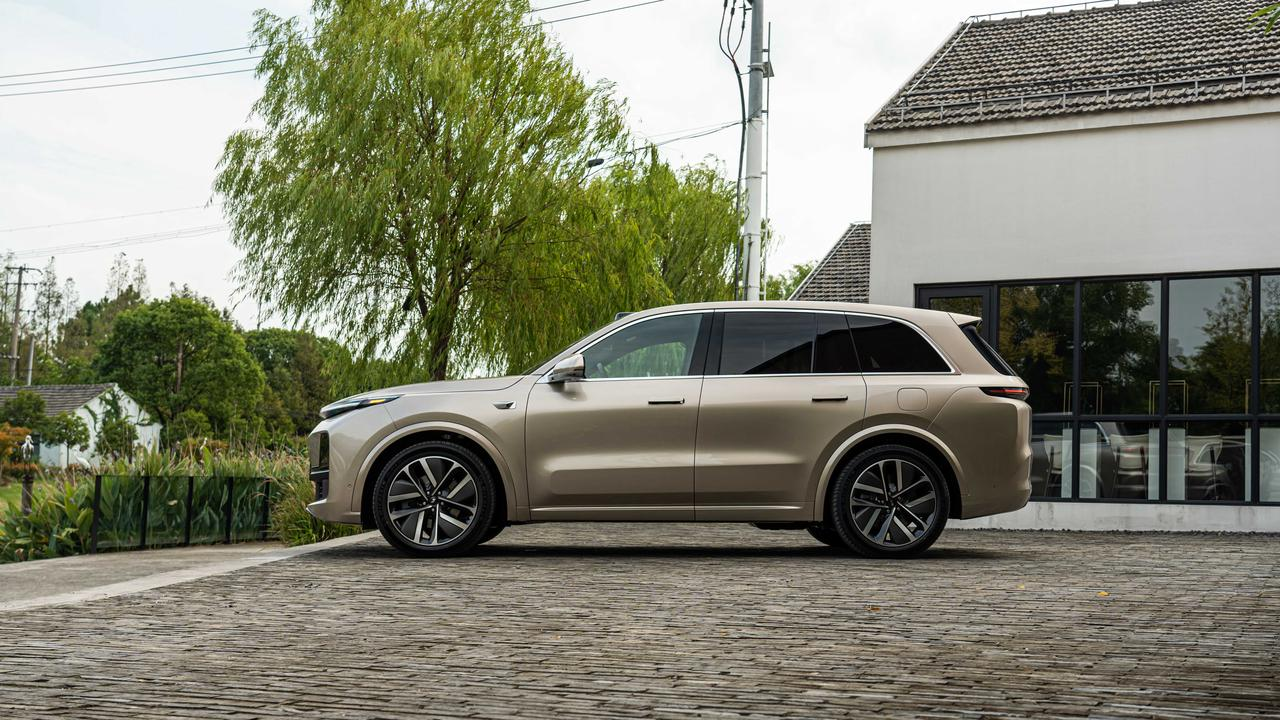
Show your friend the L8 photo and tell him it’s the L9, he probably won’t disagree. From the front and side angles, the exterior designs of the L8 and L9 are almost identical, and few people can tell the difference at this angle.
In a scrutinizing spirit of finding differences, we observe that the biggest difference between L8 and L9 are concentrated in the rear end.
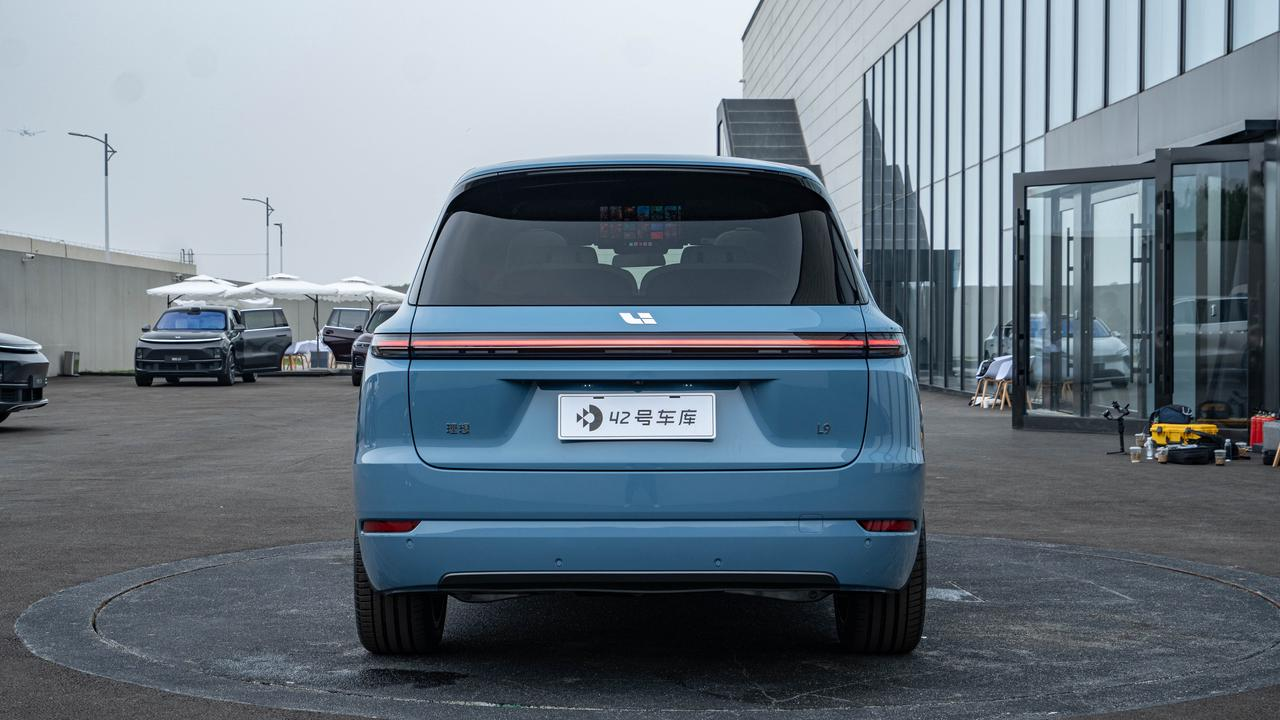

The most obvious difference at the rear is that the L8’s license plate frame is moved down to the position of the bumper, while on the L9, the position of the license plate frame is on the rear door. This design allows the entire flat surface of the L8’s trunk cover to be preserved, forming a more complete match with the coherent tail lights.
There are still some detailed changes, for example, the position of the low brake reflective sticker on the L8 has shifted from the far ends on the L9 to the position of the rear spoiler. The rear spoiler has also been further raised up, making the rear look not as heavy as the L9.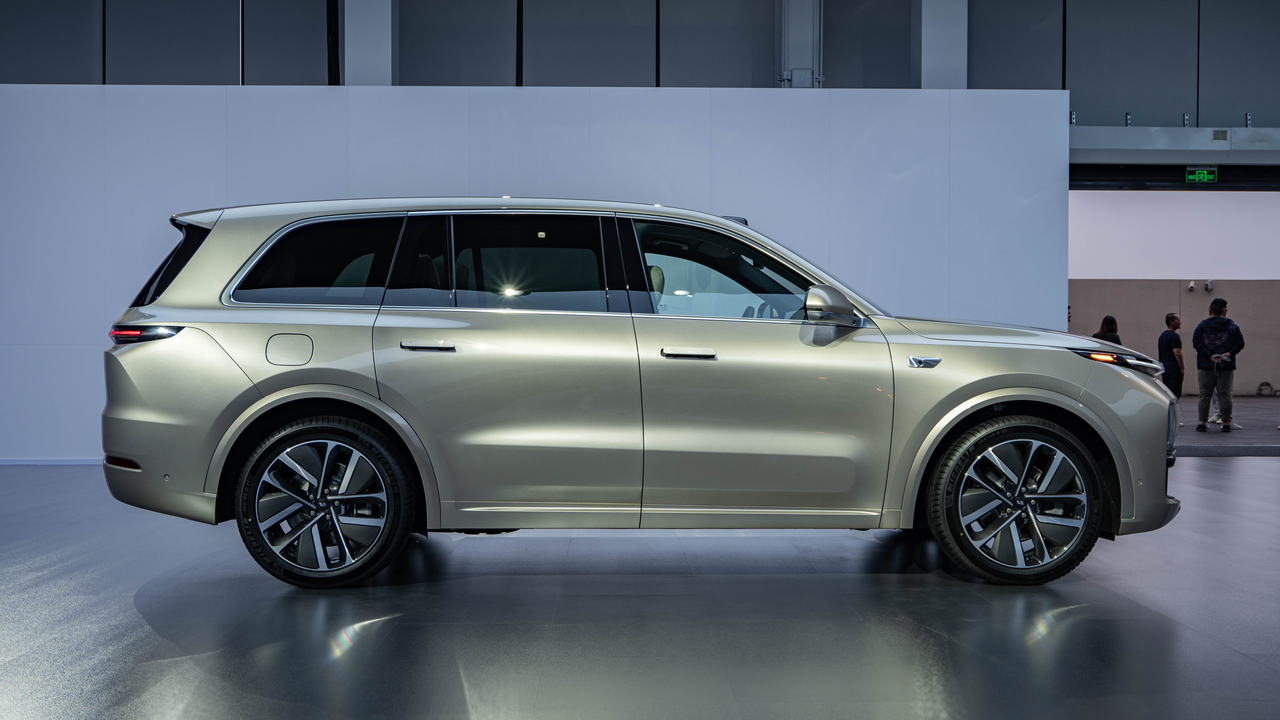
The displacement of the low-positioned brake reflective sticker allows more careful readers to distinguish between the two cars from a side position.

The downward shift of the L8 license plate frame makes the rear door panel more flat. But where should the external opening button for the trunk be placed?
If placed on the upper edge of the license plate frame groove, the position is too low and requires bending over. The proper position is exactly where the license plate frame has shifted down to create a flat surface. Making an opening in this position would destroy the integrity of the design.
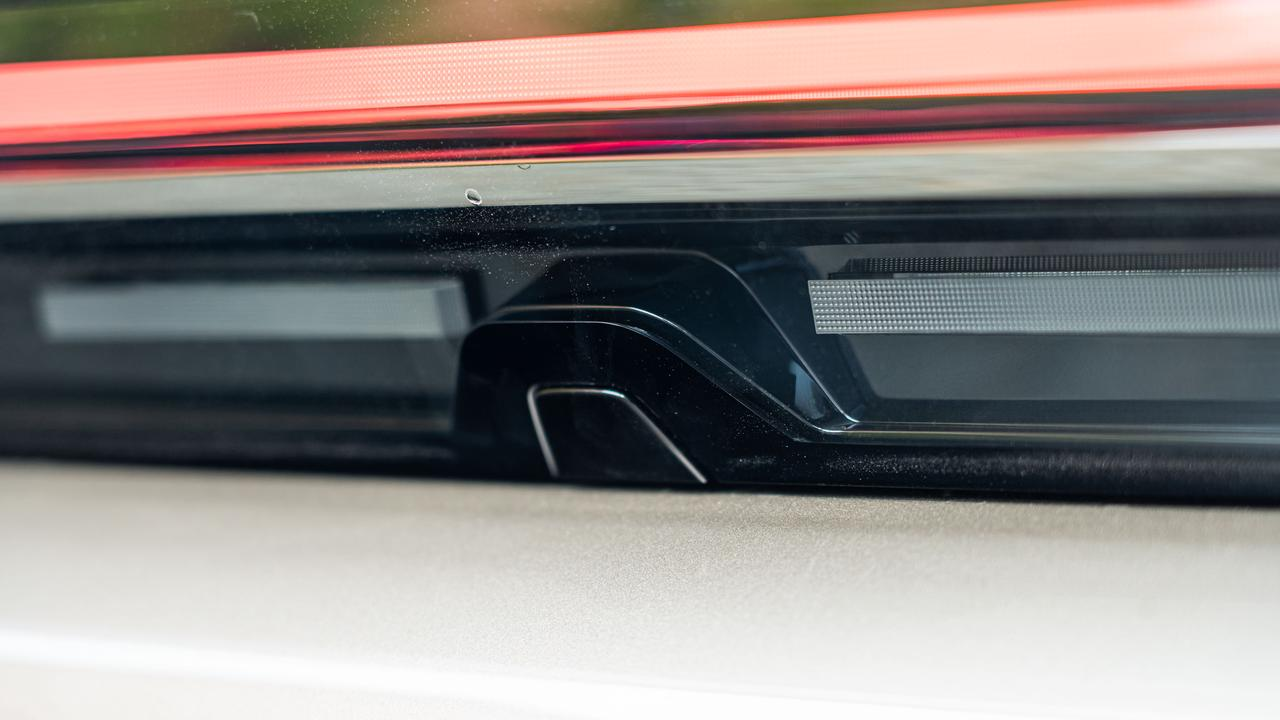
L8 quietly placed this button in the recessed edge of the through-type taillights, which I call the “shadow of light“. This is an excellent opening position that preserves the entire surface without creating an opening, ensuring aesthetics and practicality. This design is very thoughtful.
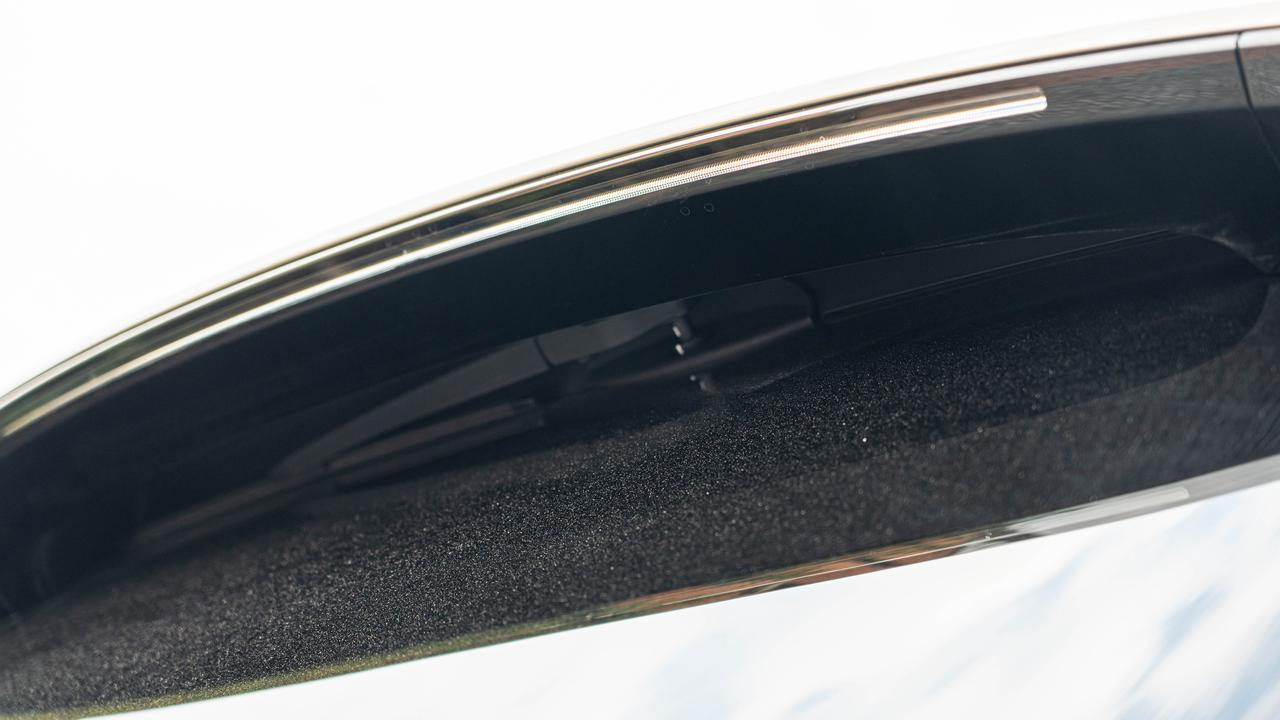
To ensure a unified and concise look of the entire rear end, L8 and L9 have placed the rear wiper below the small tail wing. This position is also located in the “shadow of light”.

At this point, let’s take a look back at the discontinued Liangxiang ONE, and you will find that L9 has retained many of the ONE design elements in the rear end, such as the upgraded through-type taillights, as well as the positions of the license plate frame and the low-positioned brake reflective sticker.
The differences between the back ends of the cars are the most numerous, but there’s still more to talk about in the front end.
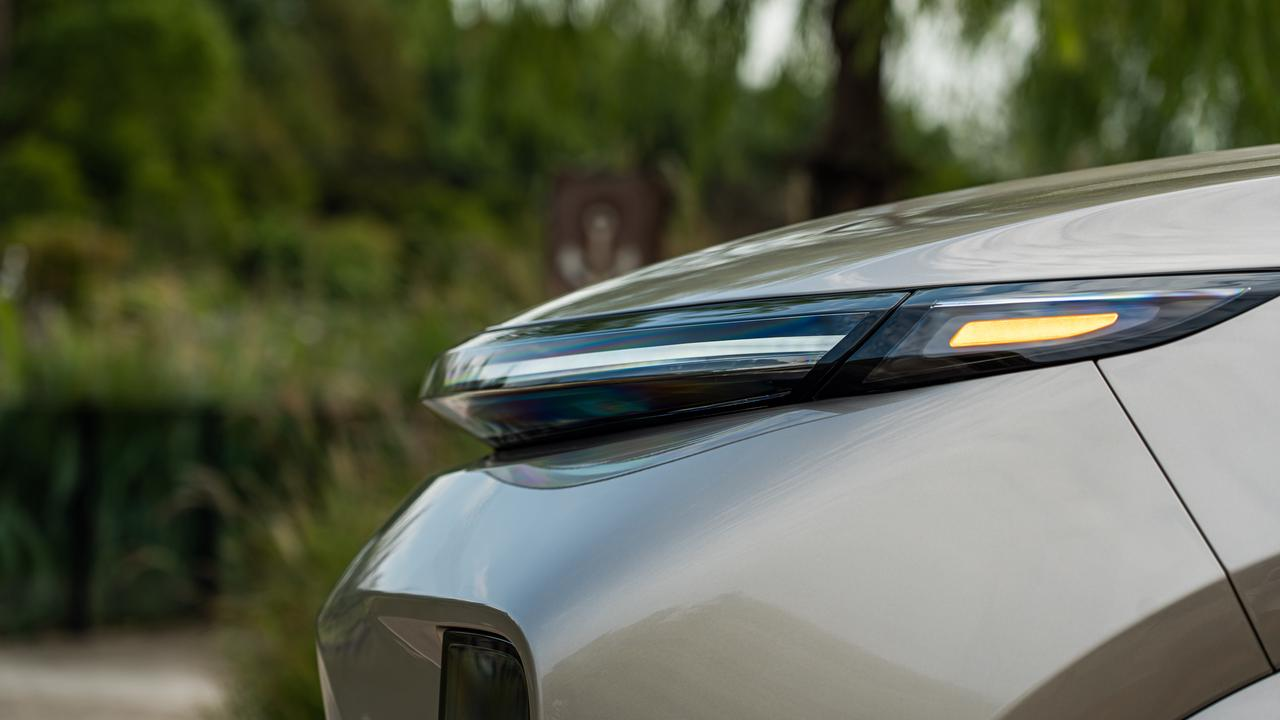
The priceless seamless headlight design is also undoubtedly directly adopted by L8.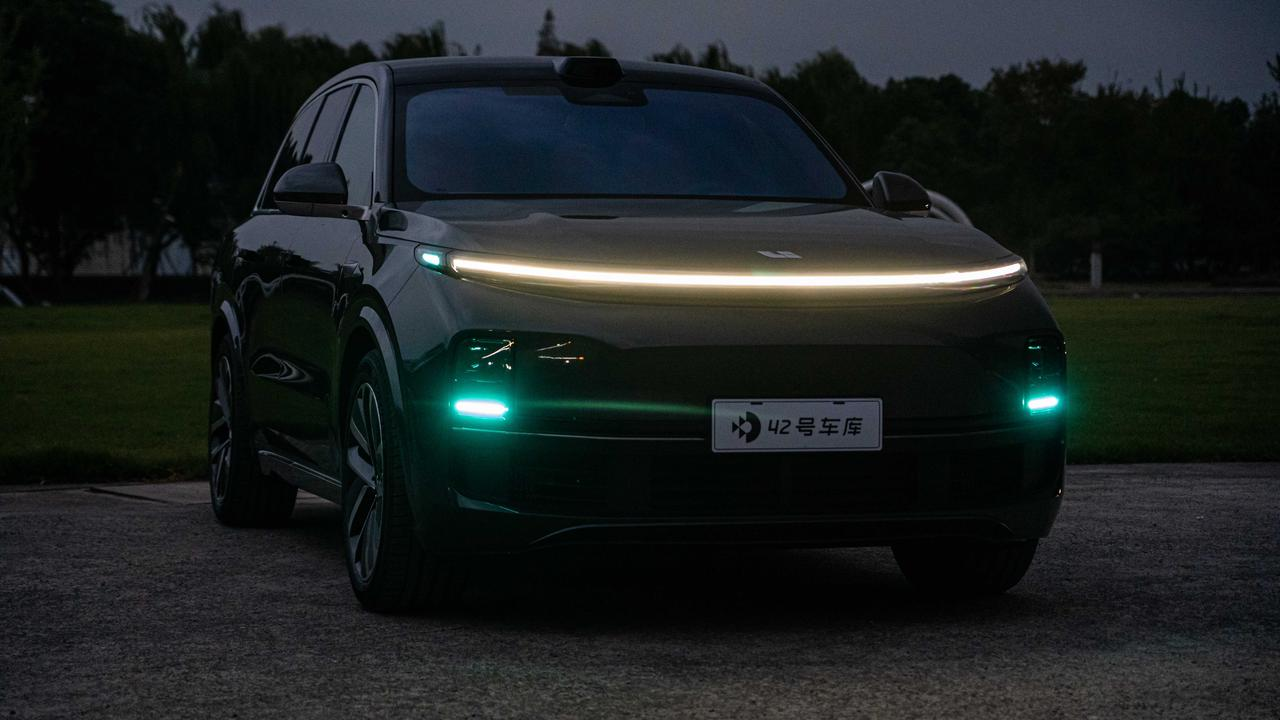
Aside from uninterrupted shooting by various electronic devices under normal conditions, L8 also stands out at night. When the high-brightness strip light and the lake-blue ADAS auxiliary driving indicator light up simultaneously, the recognition of the entire car reaches its maximum.
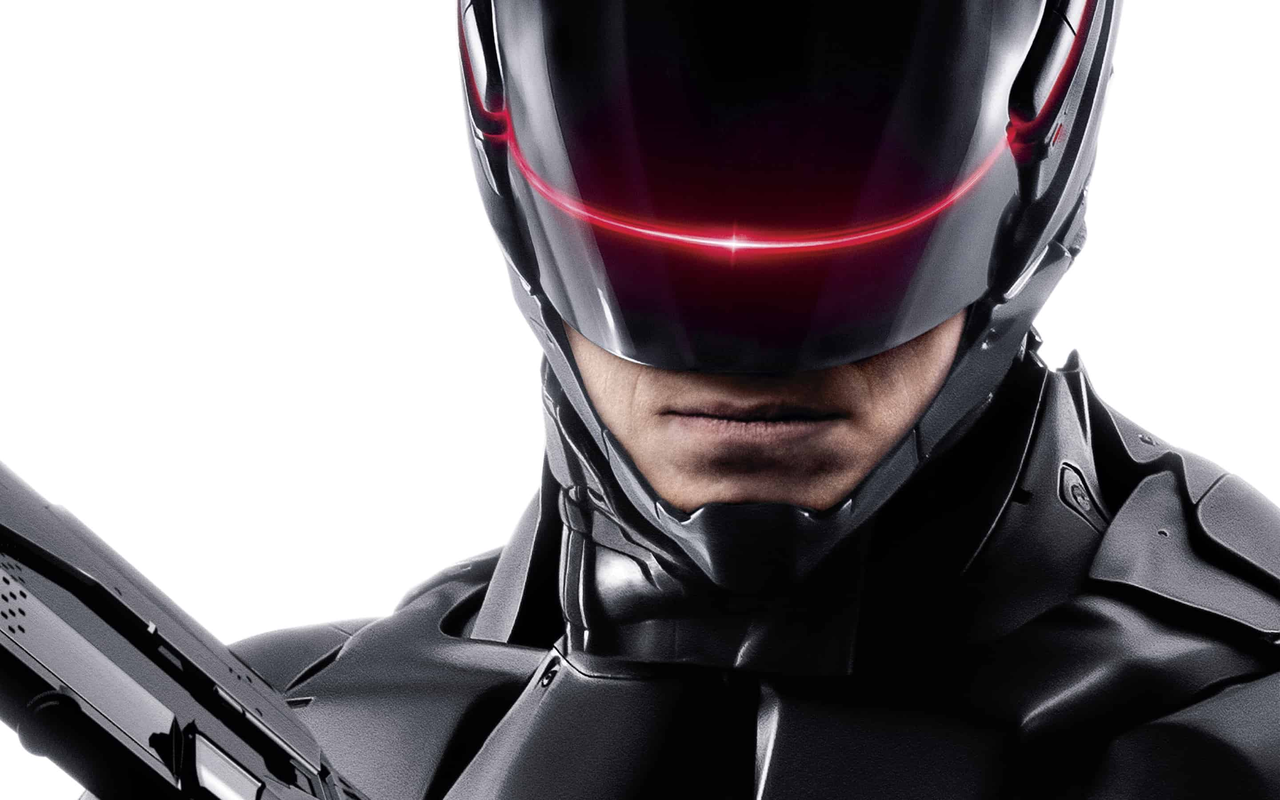
The L8’s night lights really remind me of the mechanical mask that the protagonist Murphy wore in the 2014 version of “RoboCop”, which also had a long slender strip of light.
I even conceived the direction of the next generation of strip headlights based on this concept. After achieving uniform brightness, the next step is to pursue brightness focusing at any position on the strip light to achieve the concentrated “stare” effect of Murphy in the poster.
Wheels
The L8 Max we tried this time also uses 21-inch wheels. The wheel hub style is exactly the same as that of the L9, both using a petal style.
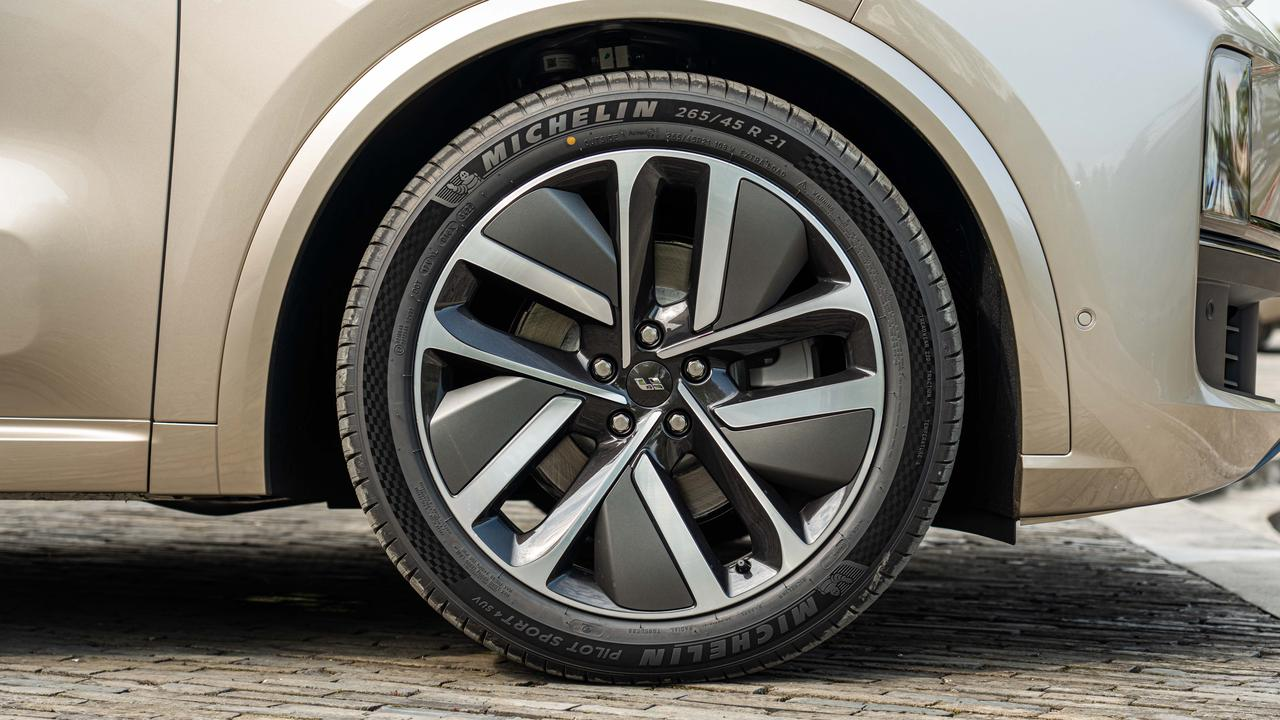
In the previous MIIT data, we saw that the L8 uses two different sizes of wheels, 20 and 21 inches respectively, with two colors of silver-gray and black-gray to choose from.

The 21-inch wheels are paired with Michelin PS4 SUV tires, with a specification of 265/45 R21. This is a special version with a sound-absorbing sponge, and the version without a sound-absorbing sponge is priced at around 2,000 yuan.

From the picture, we can see that the 20-inch wheels are matched with Michelin e·PRIMACY tires.
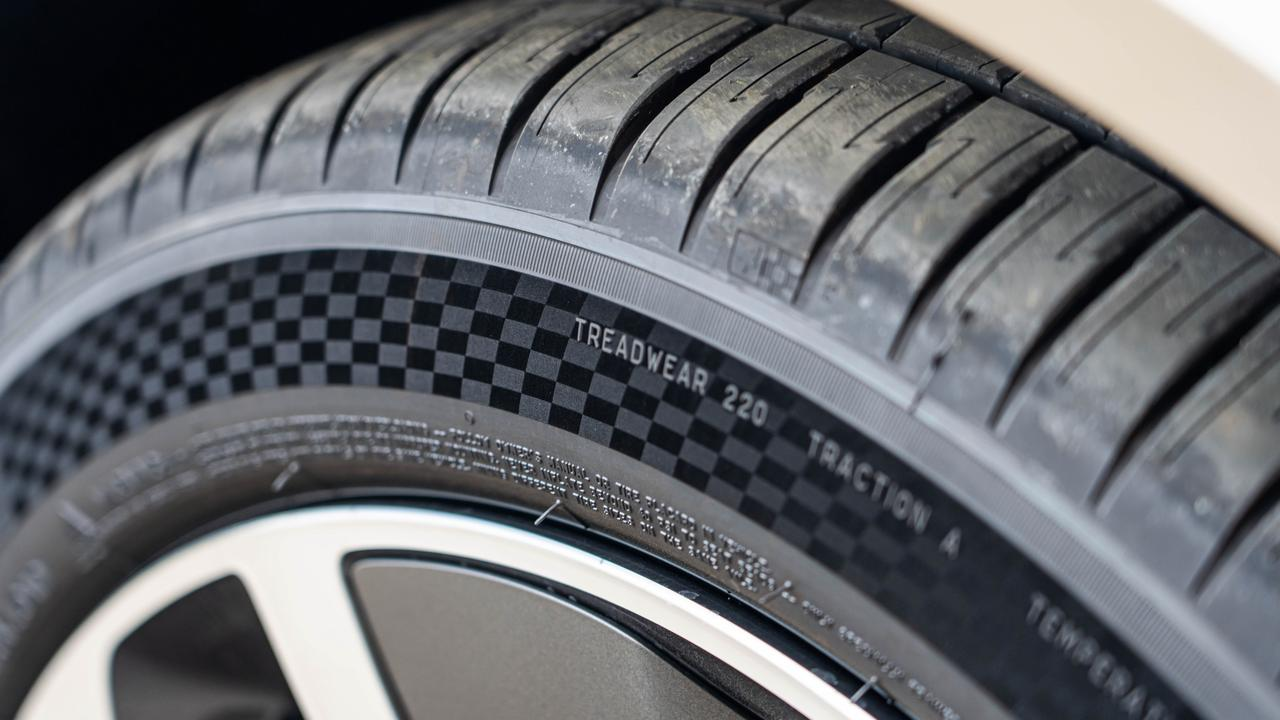 We also found that the sound-absorbing cotton material in the wheel arch lining of the car shown below had even been striped during the tire shooting.
We also found that the sound-absorbing cotton material in the wheel arch lining of the car shown below had even been striped during the tire shooting.

Door Handles
On the L8, Ideal abandoned the non-hidden door handles of the ONE and instead adopted pop-out door handles, a design decision that the creator, Li Xiang, had “firmly opposed” in the past.

The reason Ideal put pop-out door handles on the L8 and L9 is naturally for better aerodynamic performance. In addition, they have set the pop-out force of the hidden door handles to “8 newtons,” which can pop off ice and snow that have condensed on them in the winter. In the event of an accident, the door handles will also pop out first.

Of course, this door handle also supports mechanical opening. After it pops open like the main driver’s door handle shown in the figure, continue to pull it open, and you can insert the mechanical key to open the car door. This feature is mainly used when the power is out.

Here, I should also mention the Ideal’s family-designed “pebble” key, which is now available on the L8 after being introduced on the L9, and it is foreseeable that it will continue to be used in all Ideal models with their designs.
However, the physical key’s presence is continuously diminishing as it is crowded out by cards and Bluetooth-enabled keys.
Space: Is It Big Enough?
Before I begin this chapter, let me state that the seating area of the L8 is almost indistinguishable from that of the ONE.
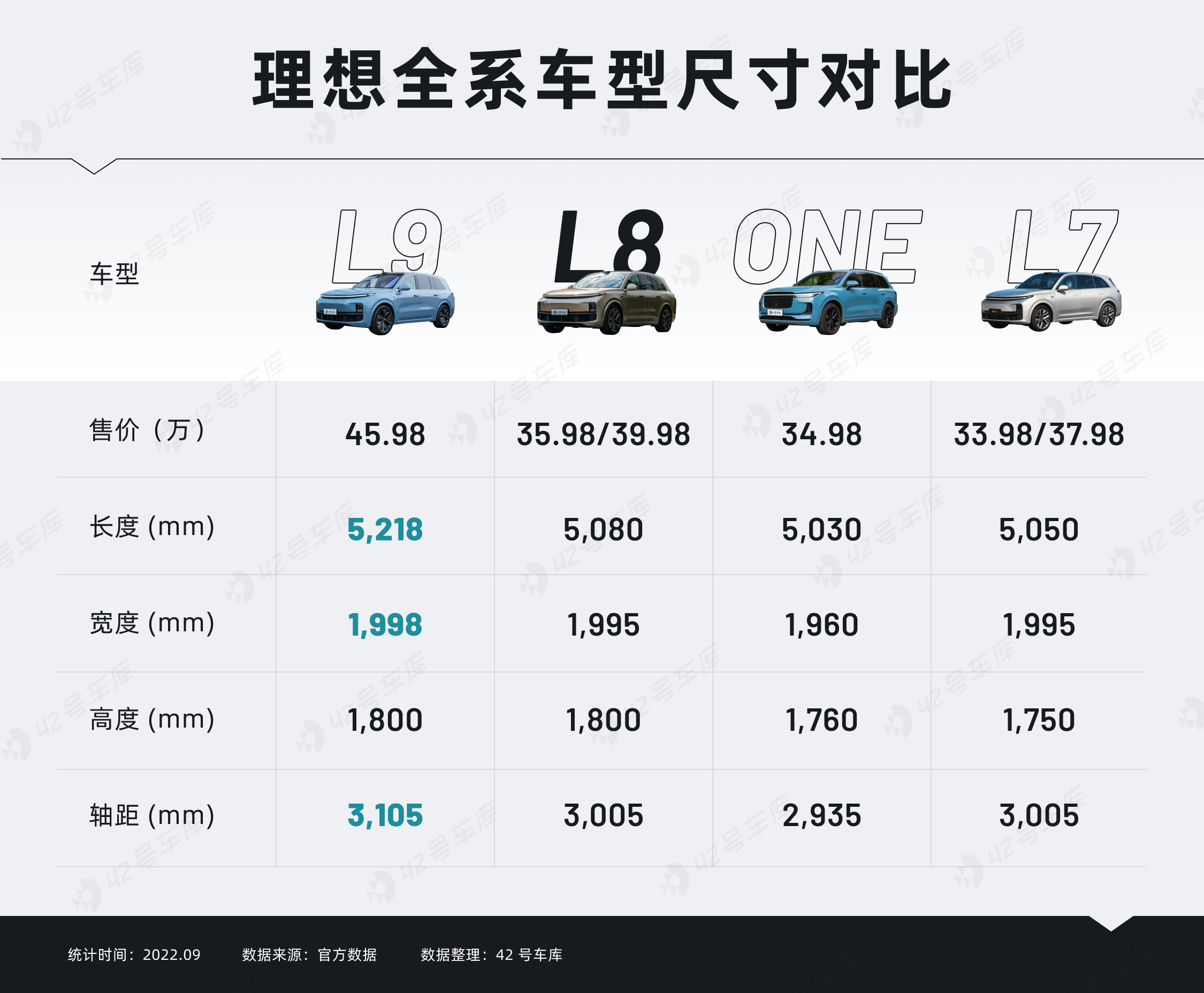
In terms of size, the L8 has grown 5 cm longer, 3.5 cm wider, 4 cm taller, and has a 7 cm longer wheelbase compared to the Ideal ONE.Compared with L9, the length of L8 has been reduced by about 13 cm, and the wheelbase has been reduced by 10 cm. The width has almost no change, only decreased by 0.3 cm, and the height of the two cars is exactly the same.
The reason why the width of L8 and L9 are consistent in height is that the X-platform transverse-mounted 4-cylinder engine assembly and the double-wishbone suspension structure have higher space requirements, which is confirmed by the parameters of L7.
After reading the external dimension parameters of L8, I believe that most people would be curious about the interior space of L8, especially the changes in passenger seating space compared to L9 and the old ONE.
We measured the second and third-row seat data of L8, L9, and ONE, and it can be seen that after the height of L8 was increased, it has an advantage over ONE in the second and third-row seat heights, and the cushion length difference is not significant.
There is also a set of ideal official data here:
-
The maximum legroom of the second and third rows of L8 is 1,021 mm and 772 mm respectively, the width of the central aisle is 181 mm, and the internal X-axis length is 3,332 mm.
-
The maximum legroom of the second and third rows of the ideal ONE is 970 mm and 770 mm respectively, the width of the central aisle is 191 mm, and the internal X-axis length is 3,352 mm.Translate the Chinese text in Markdown below into English Markdown text in a professional way. Retain HTML tags inside Markdown and only output the results.

Here, the length in the X direction refers to the length of L1, which is the length of the passenger space, from the driver’s feet to the trunk space.
Yes, you might wonder why the L8 model is longer than the older ONE model by 5/7 cm in terms of car length and wheelbase, but the internal length in the X direction is shorter by 2 cm compared to the older ONE model.
The answer is still because the new turbocharger volume and the double-wishbone suspension structure take up a lot of space, so the internal length in the X direction of the L8 is indeed slightly shorter than that of the ONE.
This creates a new problem: as the internal longitudinal length is slightly shorter, will the passengers’ seating space be compressed? We will answer this question by showing the test driver’s actual experience.
Second-row Space

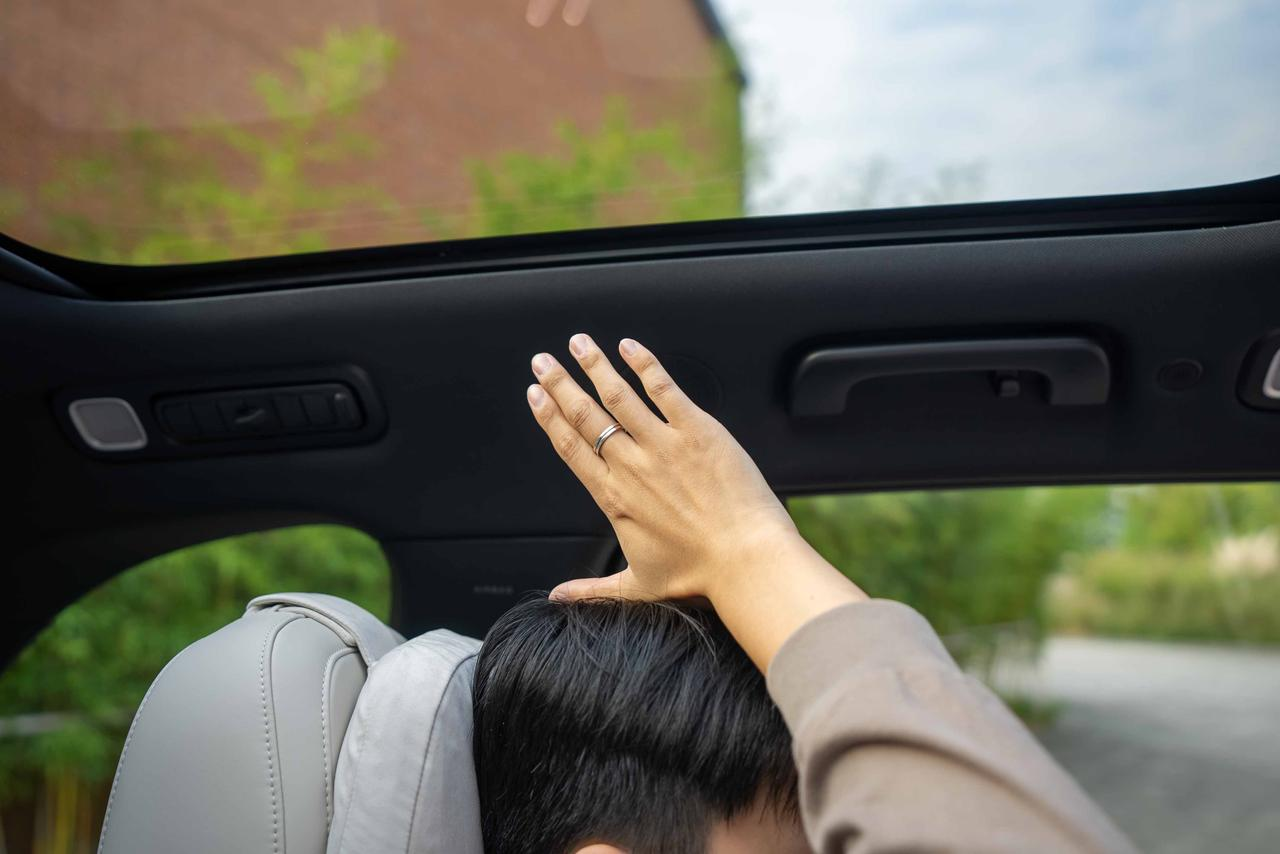
Our test driver @Jiang Xiahei, 175 cm tall and weighing 68 kg, adjusted the L8 first row to a suitable driving position. Under the comfortable seat setting in the second row of L8, Jiang Xiahei’s head has more than a palm’s distance from the roof, which is relatively surplus.

In terms of second-row comfort, the L8 and the Ideal ONE’s large sofas are almost identical in terms of wrapping and soft/hardness, both belonging to the soft sofa types. However, L8 performs slightly better in waist support than the ONE. In terms of functionality, the L8 is also equipped with massage, ventilation, and heating.
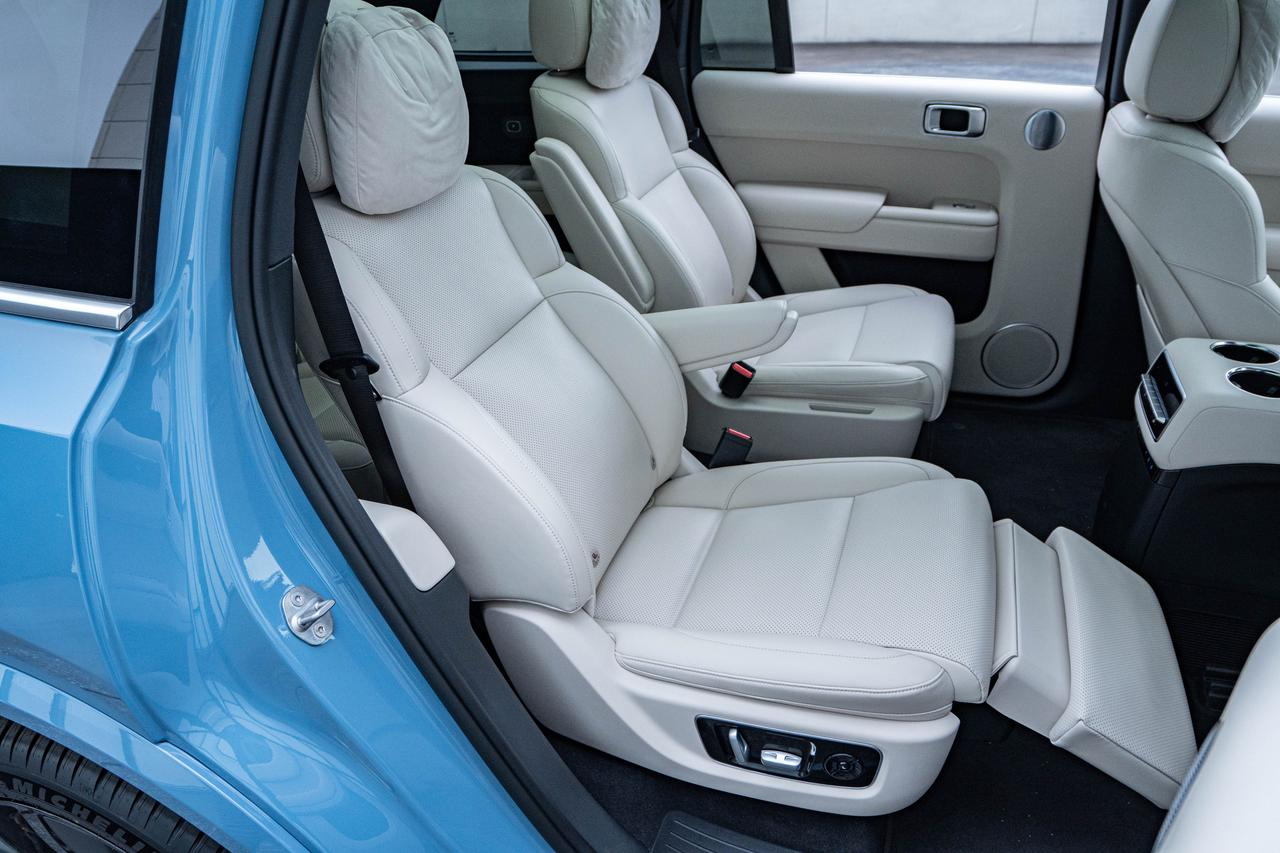
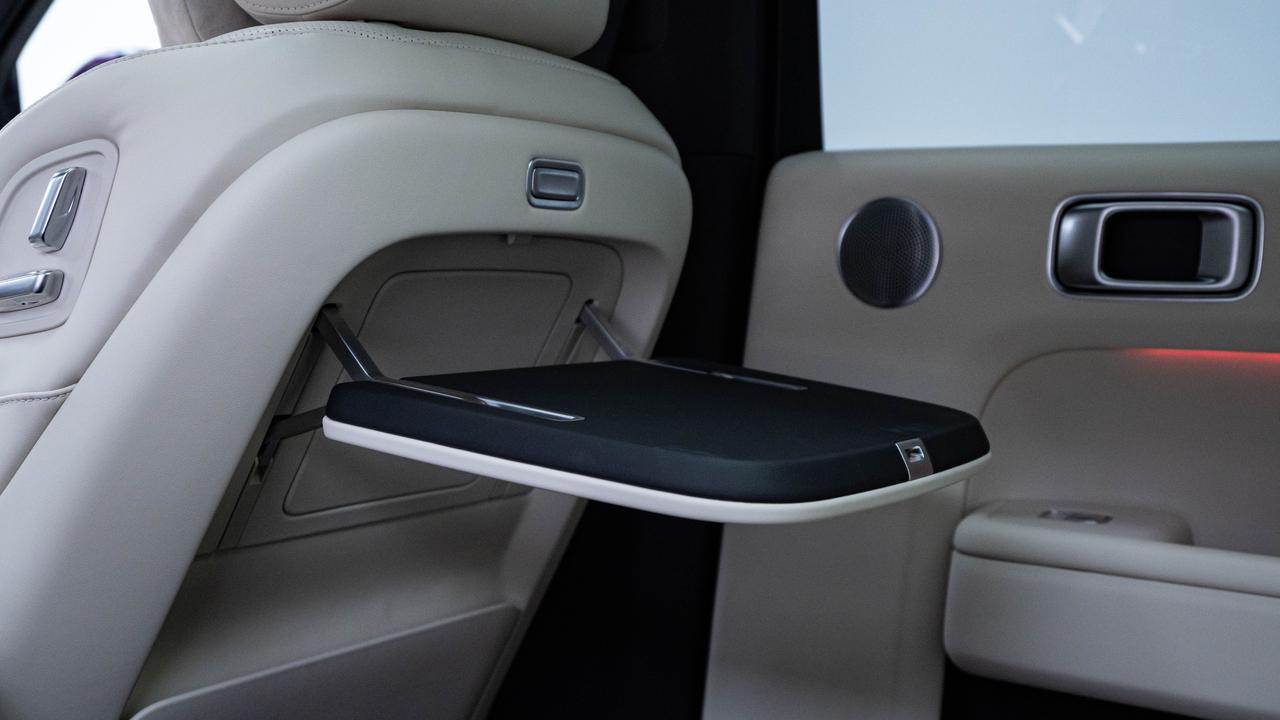
There is almost no difference in comfort between L8 and L9 in the second-row seats. They both support seat heating, ventilation, and massage. However, L8 does not have a leg rest and a small table board, which are currently exclusive to L9.

In addition to the basic charging needs, L8’s second row has 2 Type-C interfaces with a charging power of 60W. These two interfaces also support screen mirroring, which can connect not only mobile phones and tablets, but also game devices such as Switch and PS5.
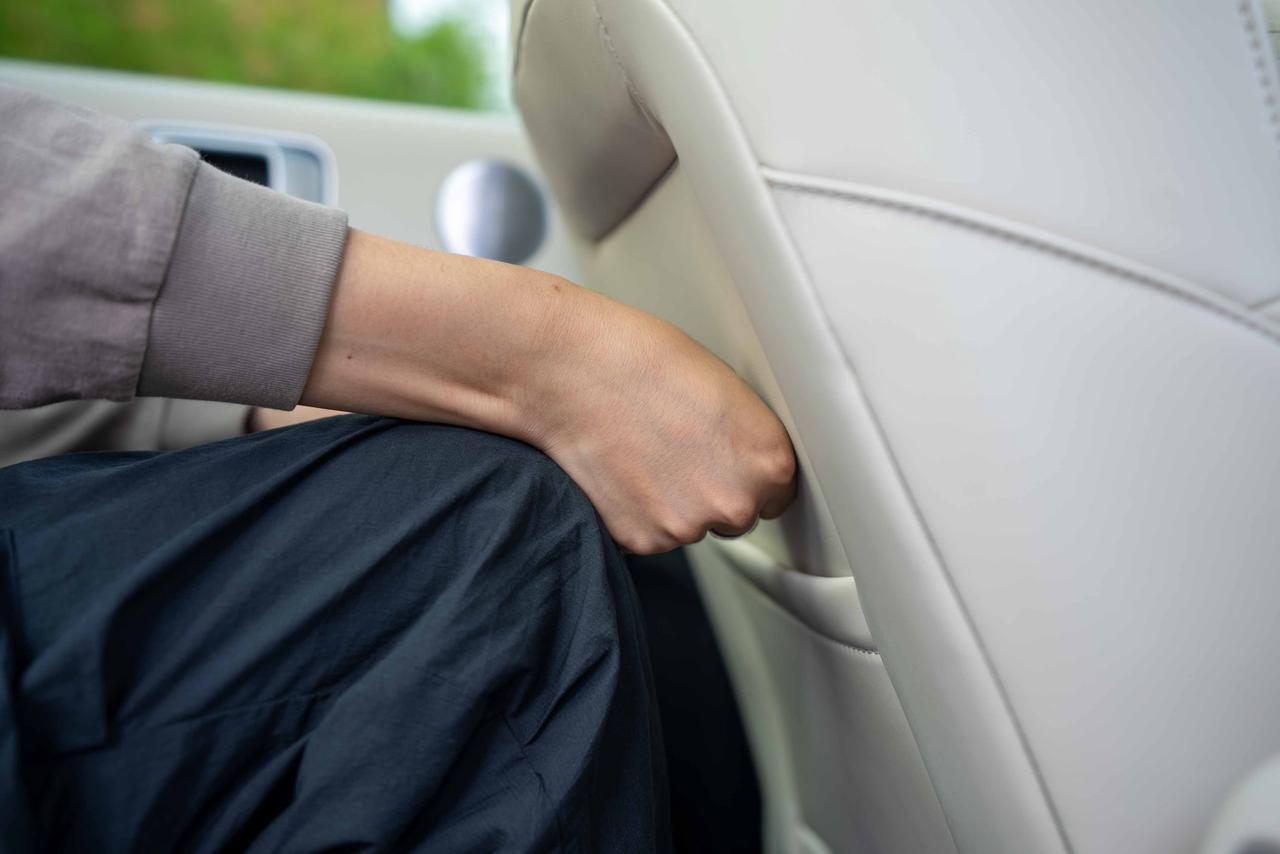
To better demonstrate the space of L8’s third row, our 175cm tall colleague adjusted the second-row seats to only one fist away from the front-row seats.
Third-row Space
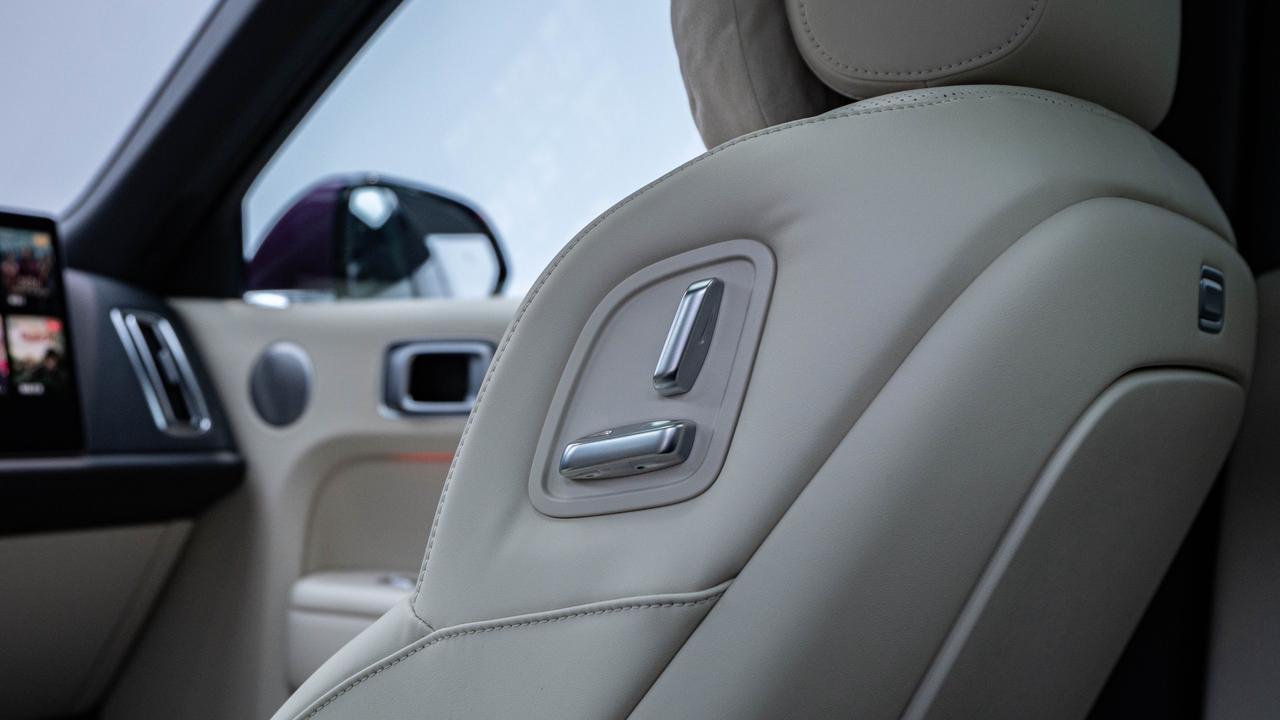
The back material of the first row seat backrest of L9 and ONE is consistent and made of hard material. However, the back side of L8’s first row seat uses soft Nappa covering to provide better leg touch for second-row passengers and can reduce the thickness of the backrest while ensuring comfort.

Compared with L9, L8 cancels the small table board in the rear row and the leg rest of the boss seat.

After our colleague arrived at the third row, he found that the sitting posture can be kept similar to the second row.The most noticeable difference in riding experience is that the cushion of the L8 is not thinner, and it is slightly harder than the second-row seats, but you will not feel tired even when sitting for a long time. At the same time, the adjustment angle of the seat back is larger than that of the ONE, which means that you can sit more reclined, and the contact area of the backrest also feels wider and more generous.
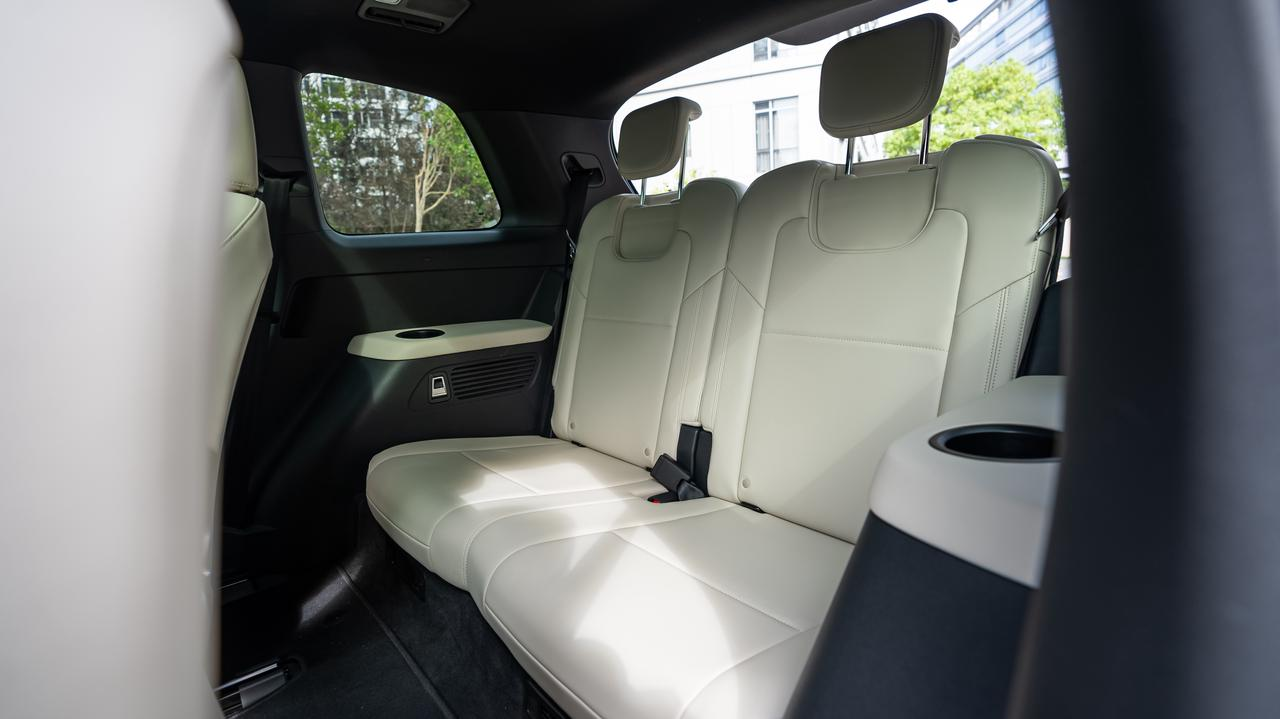
In fact, if you look closely at the third row of the Ideal ONE, you will find that the cushion of the seat is thinner, and the backrest is flatter, so the wrap-around feeling is not as good.
In addition, the ONE uses an inner buckle-style headrest, while the L8 uses a folding-style headrest, which is softer.


In terms of space, there is still about 3 fingers of space left for the head, and a fist can fit under the legs.

However, Jiang Xiahei could not completely put his feet under the second-row seats, so he put his right foot on the aisle of the second row.

In terms of third-row configuration, the L8 is obviously more richly equipped than the ONE:
-
2-way electrically adjustable backrest
-
Type-C charging interface
-
Seat heating
-
Pick-up microphone
-
Mobile phone storage compartment
-
Cup holder
-
Child safety seat interface

 ### Trunk Space
### Trunk Space
Under the third-row seats, both L8 and L9 have a 1.1 kW three-hole socket, which can be used not only for some household appliances, but also for small PCs like PS5 or ITX.

When we further compare the trunk space of L8 and L9 with that of ONE, we find that L8 and L9 have little difference in width and depth.

In terms of functionality, in addition to the conventional hooks, L8 has added a suspended adjustment button on the left and an electric adjustment button for the third-row seats, which makes it more convenient to use than ONE.


These are photos taken from the same position of the L8 in the highest/lowest point of suspension. L8’s air suspension supports a range of 80mm for adjustment.
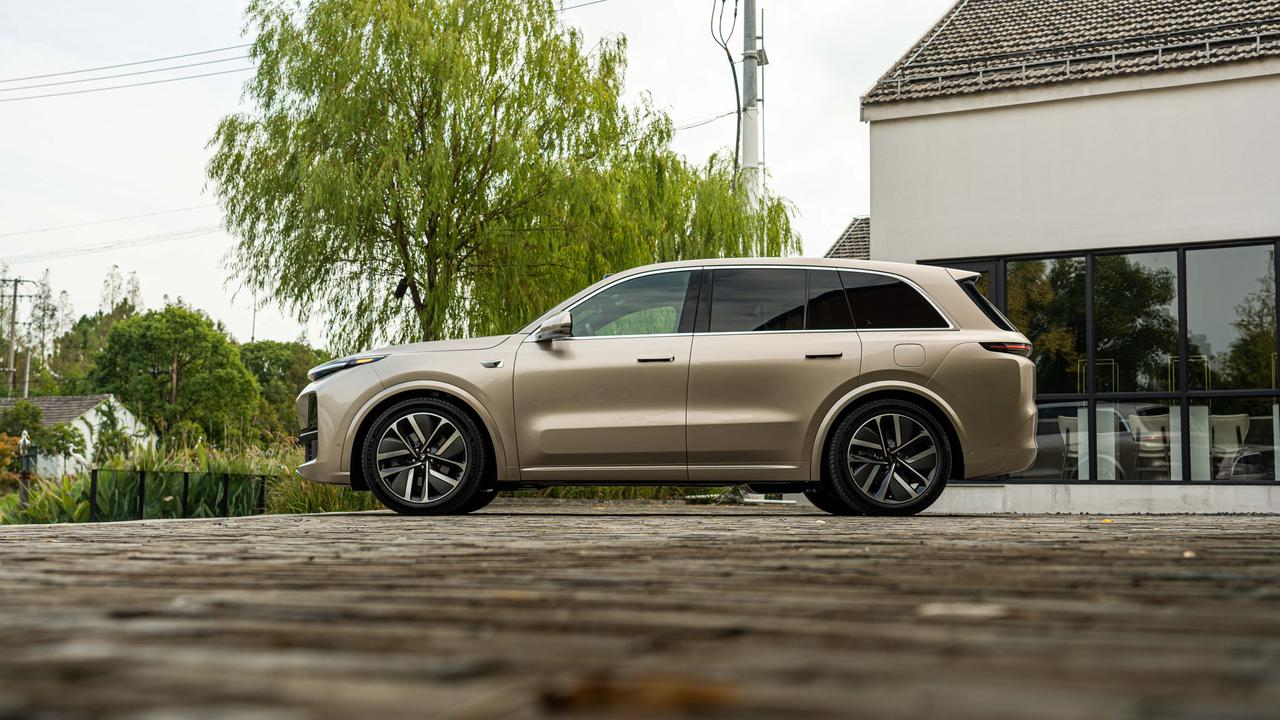
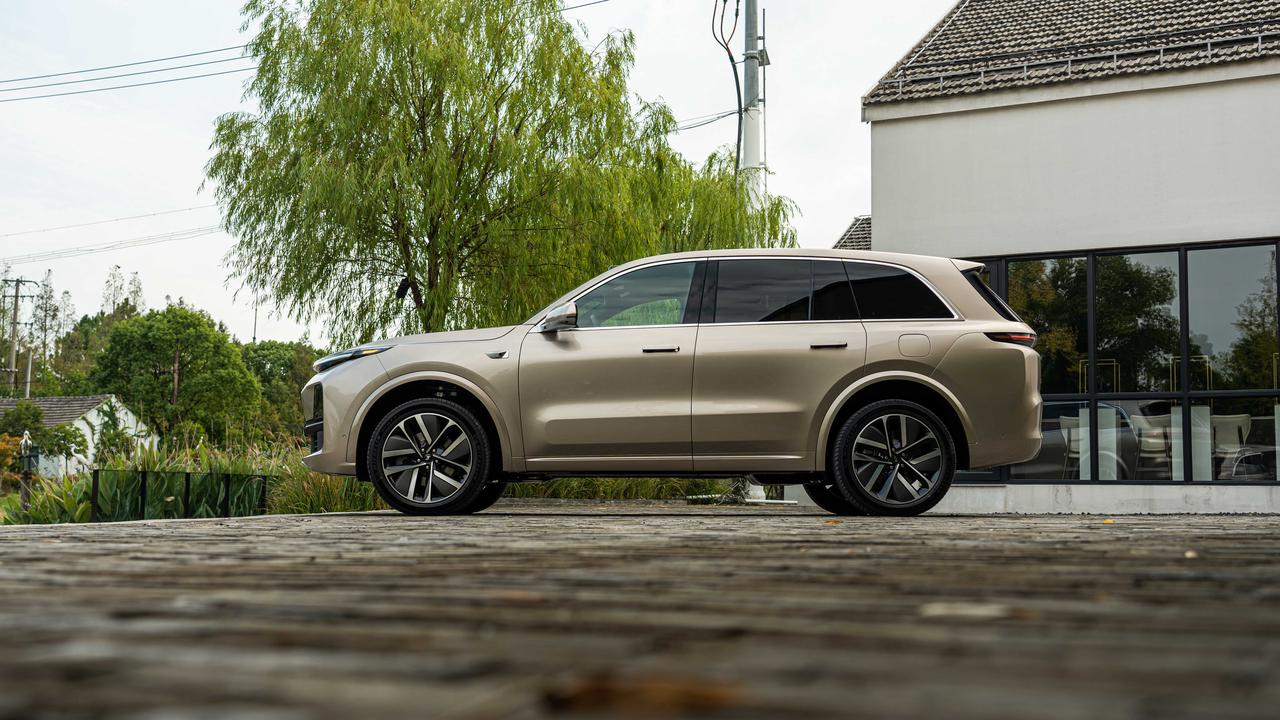
At the same time, there are also many modes of this air suspension system in L8:
-
Manual height adjustment: -20 mm, 0 mm, +40 mm
-
Load mode, which lowers the rear axle height by 50 mm
-
Easy Access mode, which lowers the entire car by 40 mm for boarding and maintains this height for the next setting.
-
Off-road mode, which raises the body by 40 mm
-
Speed-dependent height adjustment, which lowers the body height during high-speed driving, reducing aerodynamic drag and improving energy performance.

Open the tailgate cover, the left side is the cover of the battery, there are a first aid kit, a triangle warning sign, a trailer hook, and an external discharge converter, all of which are placed in separate storage compartments, which not only looks comfortable but also considers their shaking. In addition, on the right side of the L8, there is another well-organized storage compartment.
Storage Space

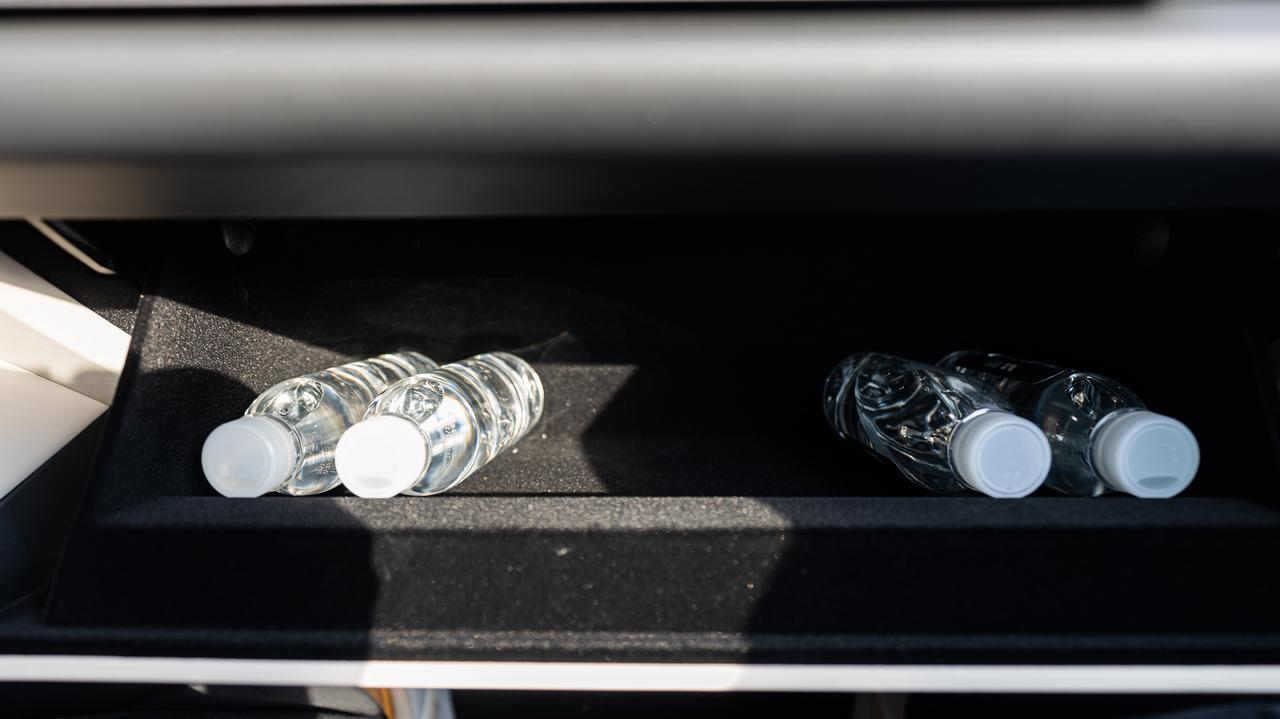
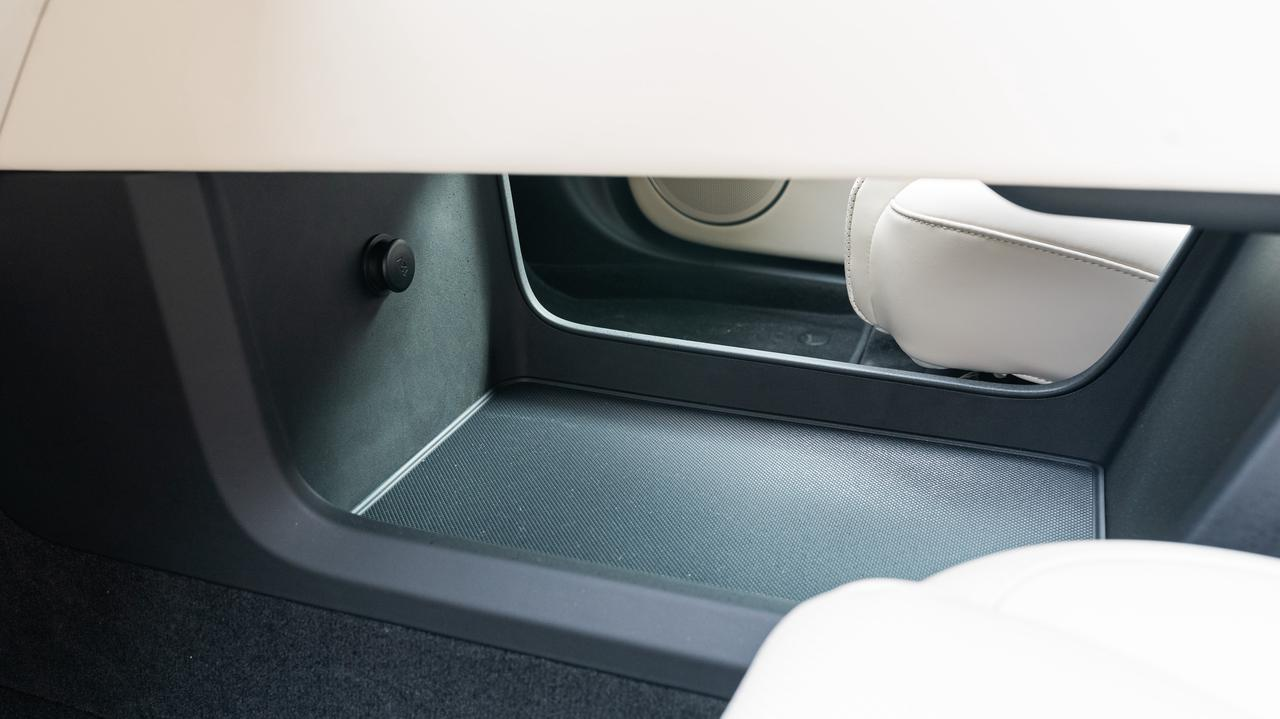
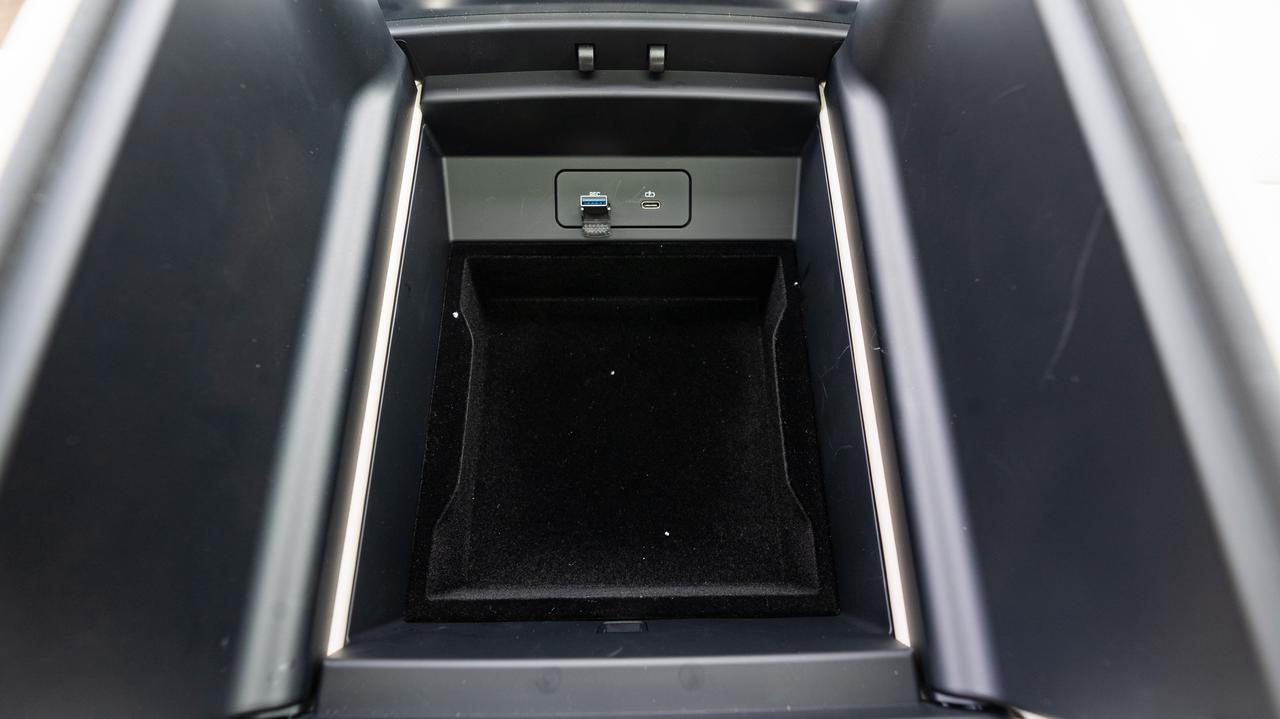
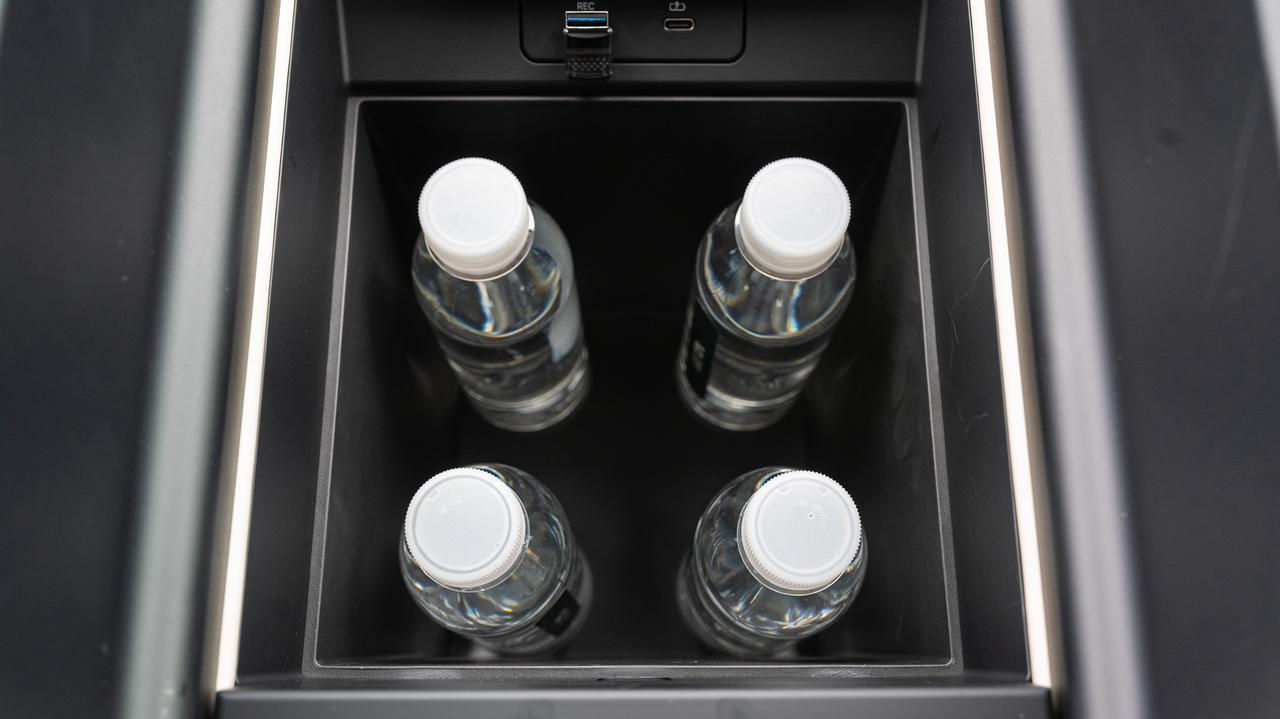
Compared with L9, the central armrest box of L8 performs better in terms of depth because there is no refrigerator occupying the space.
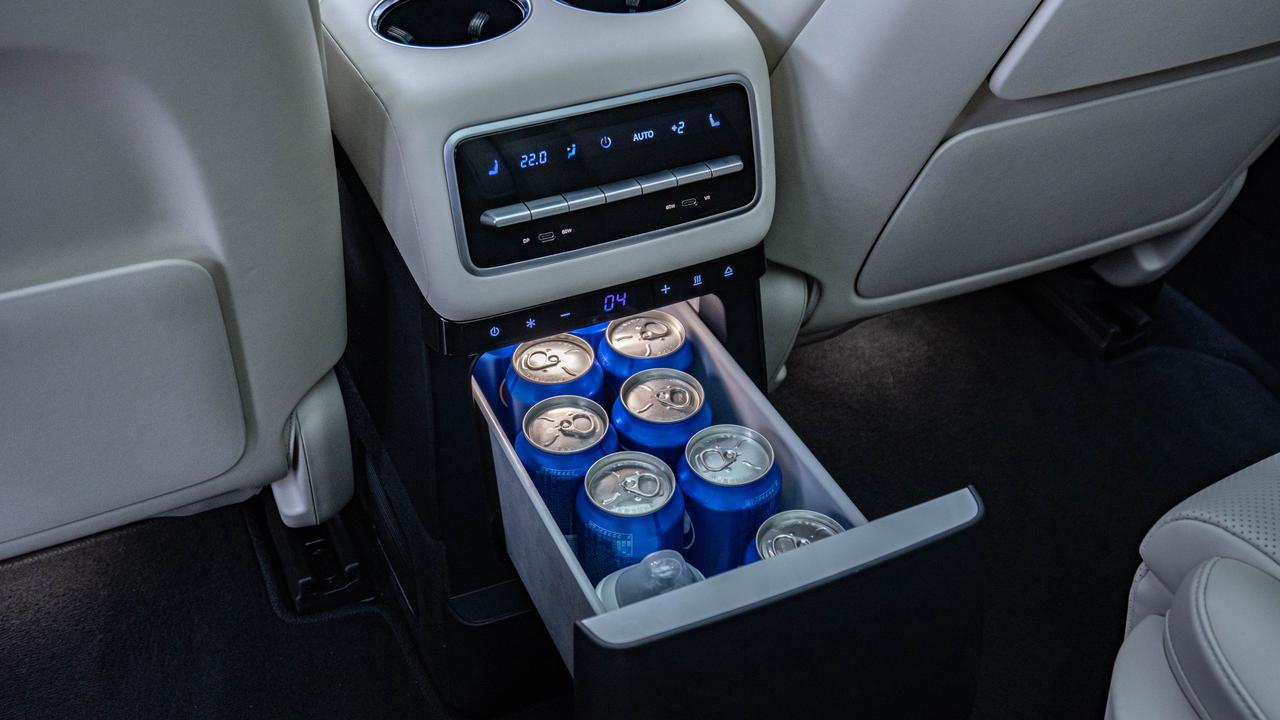
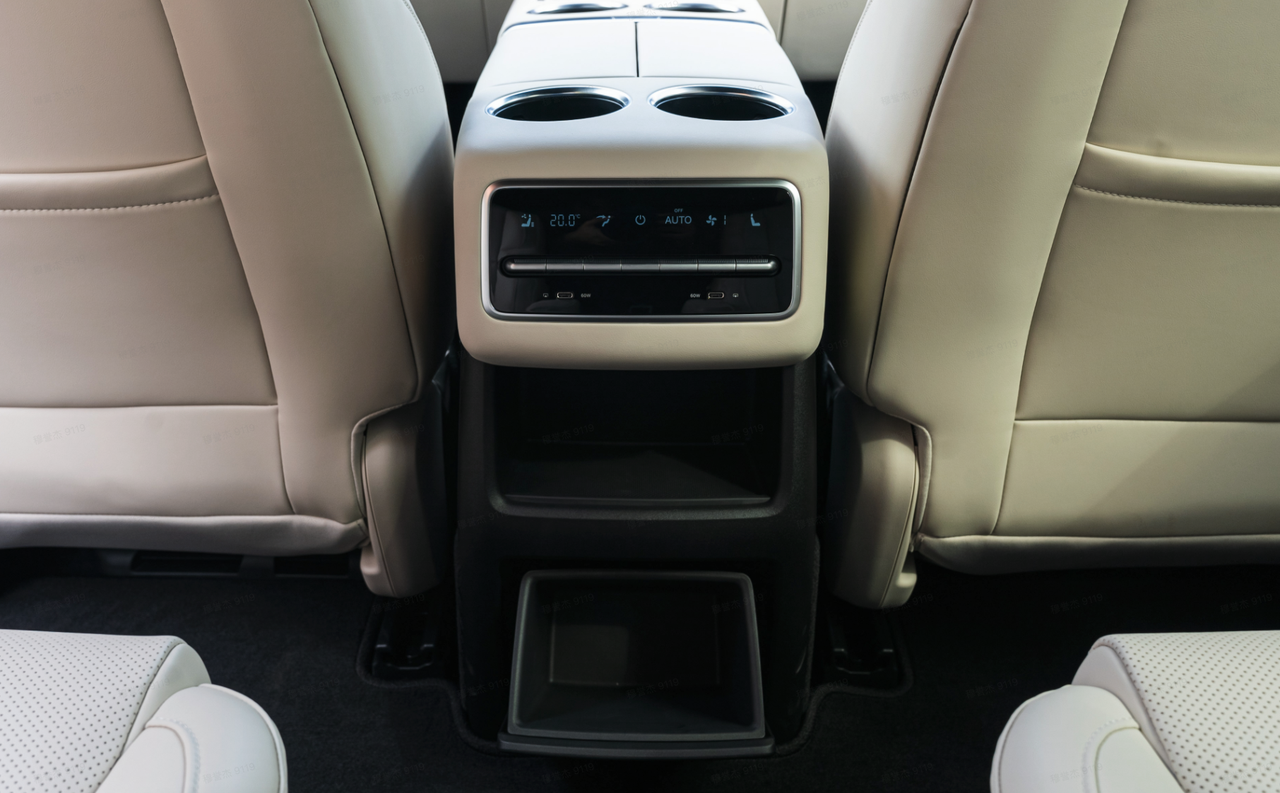
The main storage difference between L8 and L9 is in the second row, L8 replaces the refrigerator with an openable storage compartment and an open storage compartment.The imagined scenario for the two storage compartments in the back row is that the bottom one can be used to store mobile device data cables, while the open-top compartment above can be used for holding frequently used items such as phones or other objects.
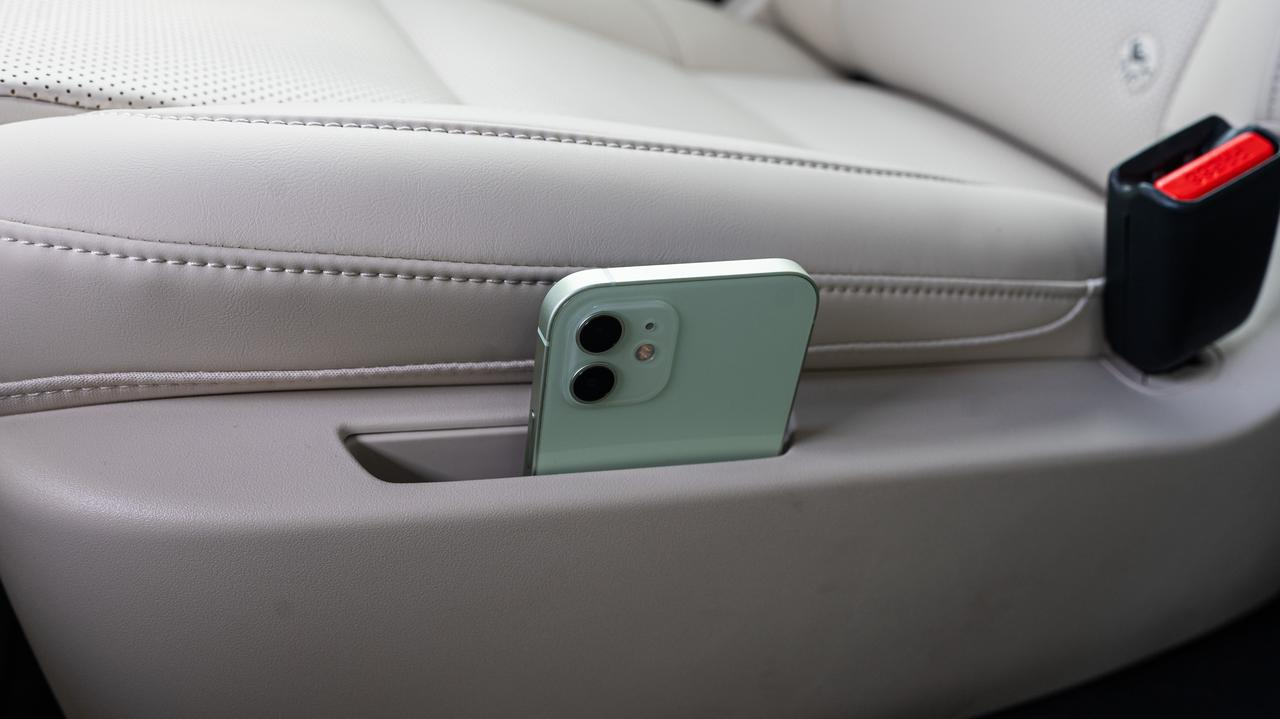
Of course, you can also choose to put your phone in the small storage compartment on the aisle side of the second-row seat.
In terms of overall space data, although the wheelbase and length of the L8 have increased compared to the ONE, the X-axis length inside the car has shrunk slightly compared to the ONE due to the increased volume of the hybrid system and double-wishbone suspension.
However, in actual feeling, the difference in space is not significant compared to the ONE, and there are upgrades in some details such as seat style, the material of the back of the first row, and the functional configuration of the third row.
Interior: Silent Rounded Rectangles
The initial feeling upon entering the interior is: “What is the difference between this and the L9?”
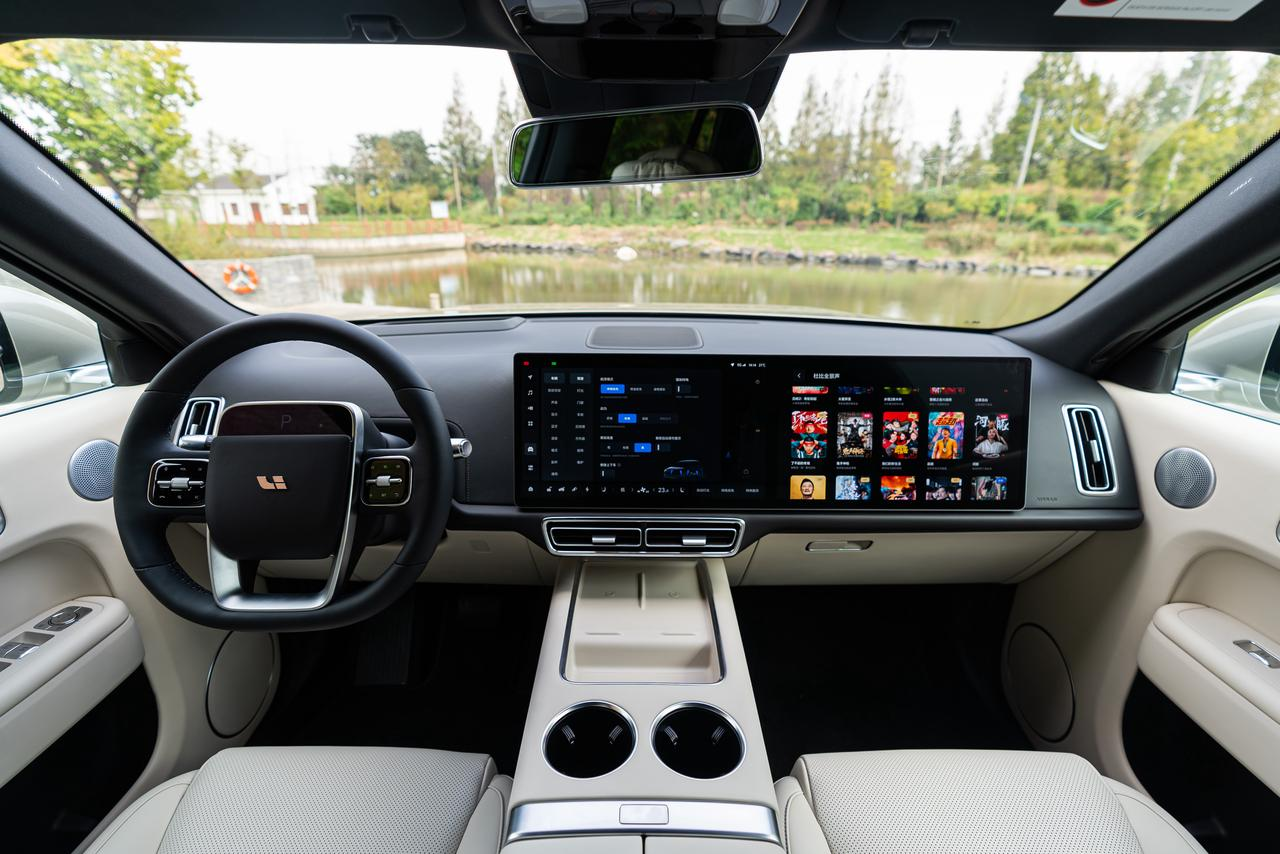

Here is an image of the L8 interior and an image of the L9 interior. I showed them to several colleagues in the editorial department, and none of them could quickly distinguish the differences between the two. The differences between the L8 and L9 in terms of functionality, design, and materials are all very small.
However, in this static experience, we still summarized the design details that run through the ideal car series: rounded rectangles, stretching from the L8 to the L9, and subsequent L7 and L6 models.
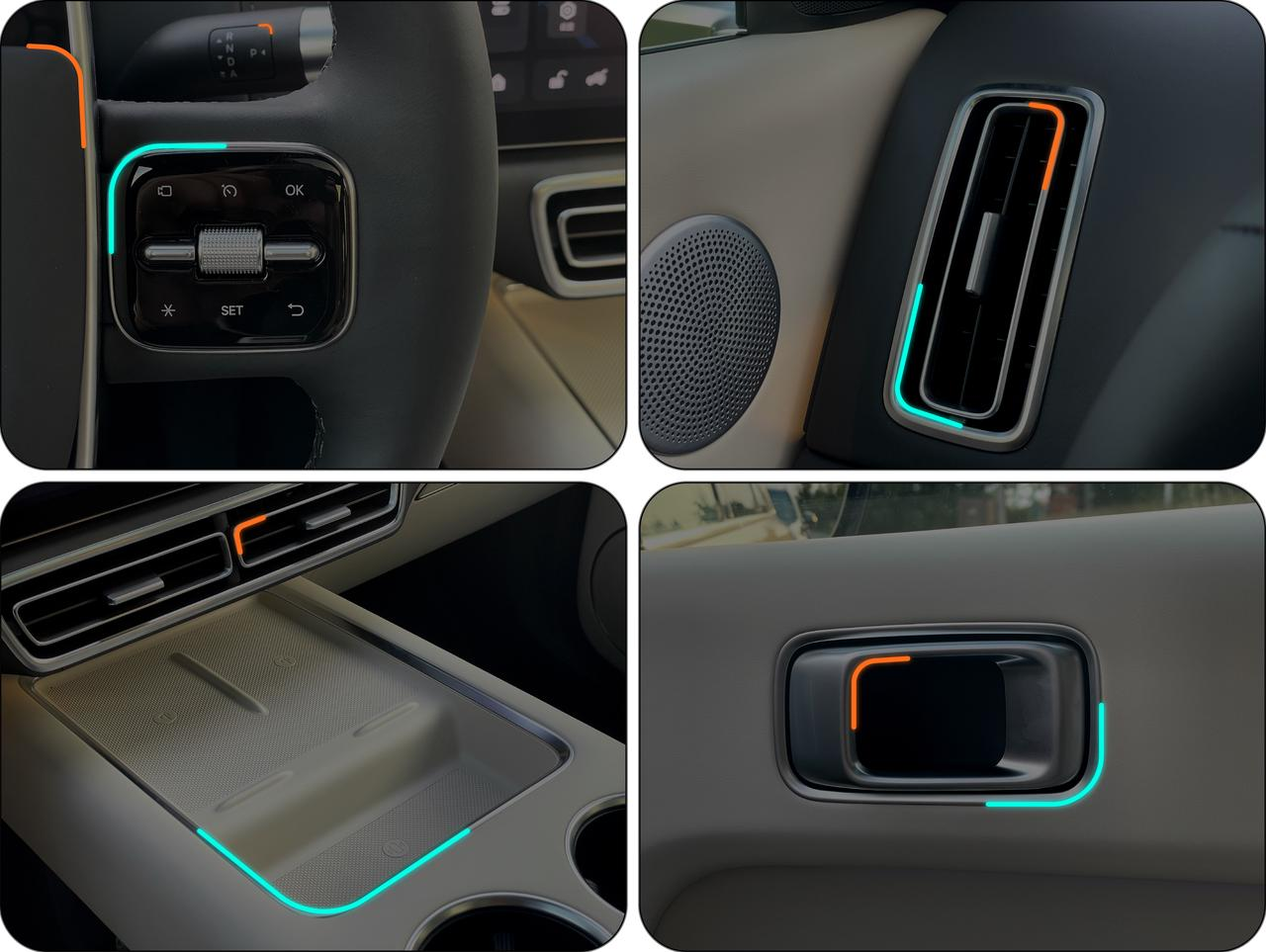
This design detail appears in many places in the ideal L8, including the steering wheel buttons, air outlets, door panel handles, and decoration lines for phone charging positions, etc.
This design has become a signature style of ideal, and in the interior of the ideal L8 and L9, it is rare to find sharp designs. All rectangles have been processed in a rounded manner.
 For the L8 door panels, the ideal design is very straightforward. They did not make different material combinations but directly wrapped the Nappa leather of the seats on them.
For the L8 door panels, the ideal design is very straightforward. They did not make different material combinations but directly wrapped the Nappa leather of the seats on them.
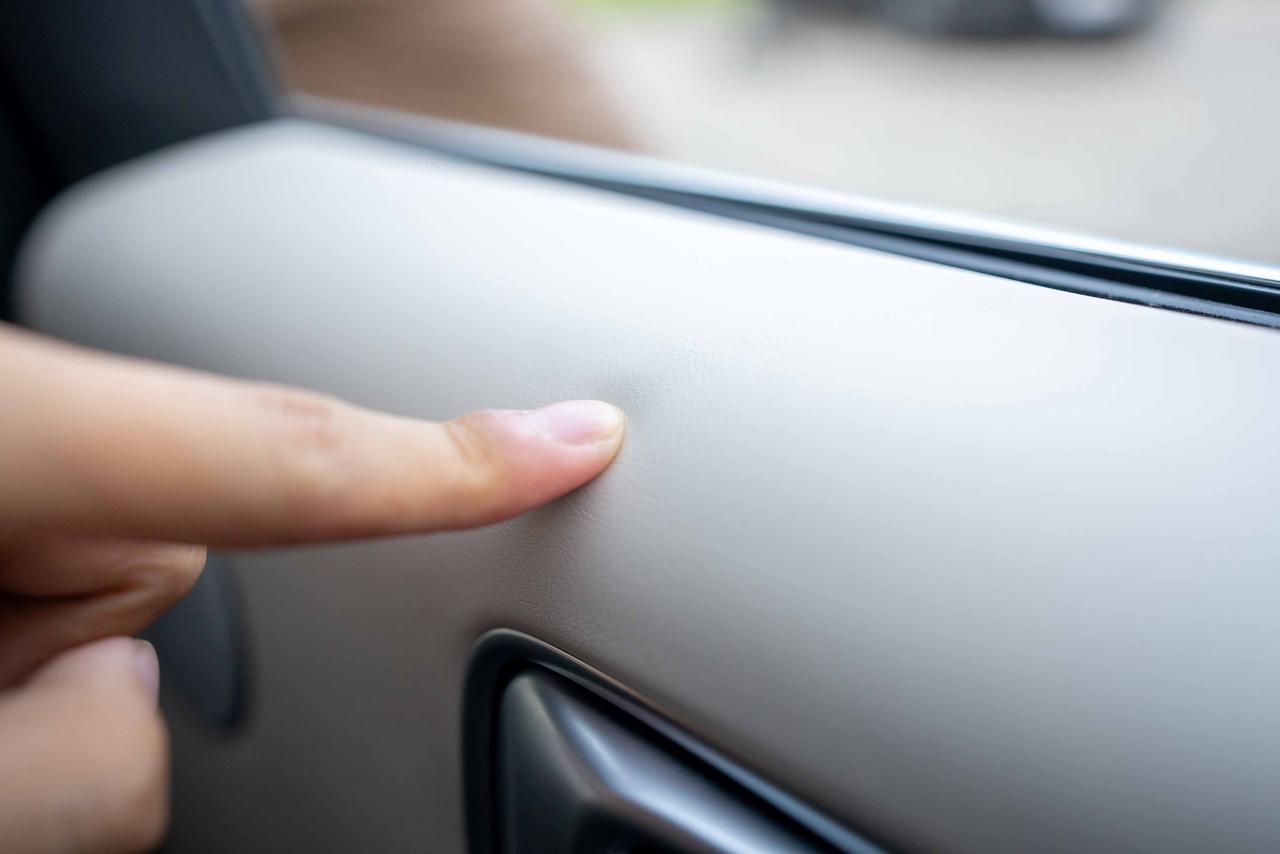
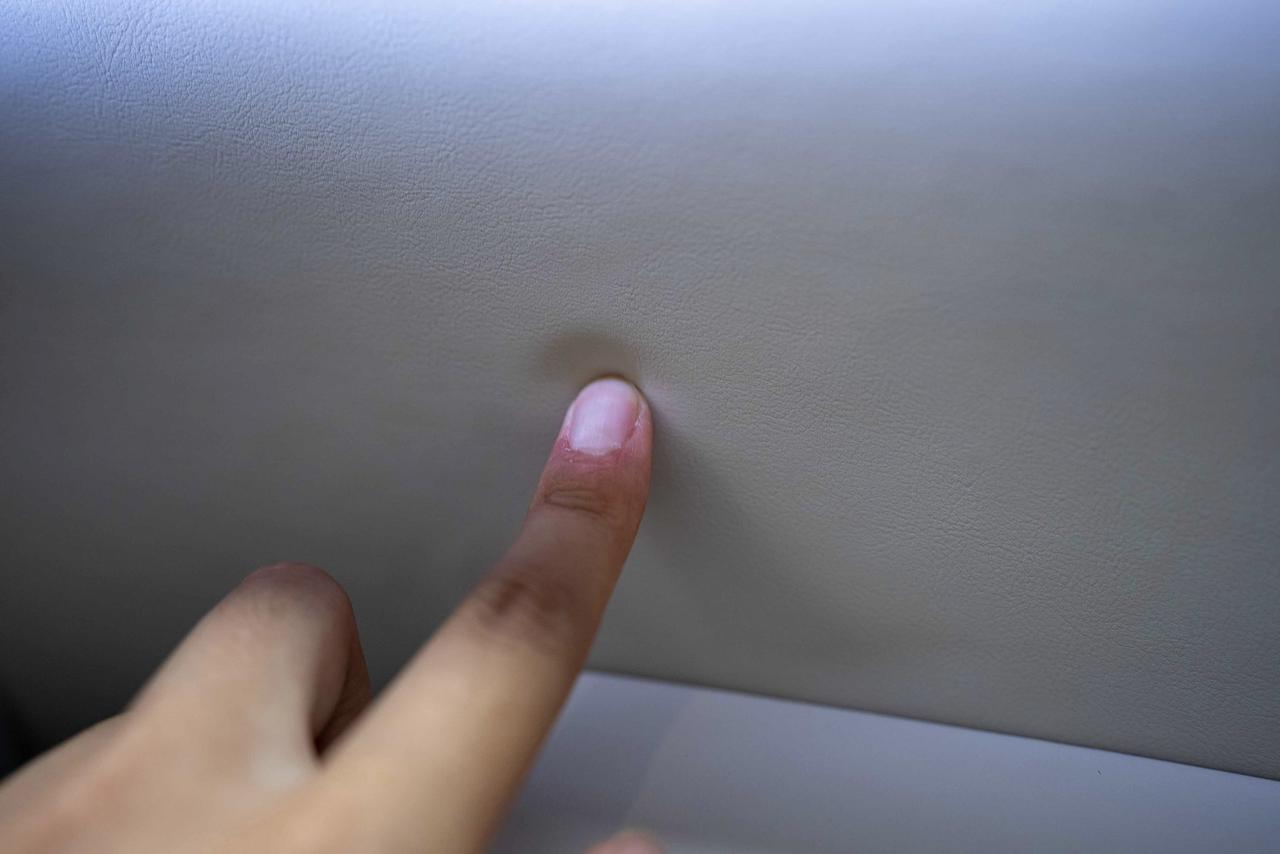
By “wrapped,” I mean that the entire door panel is covered in Nappa leather, so no matter what, the tactile feeling is very delicate. The ideal even added sponge filling under this Nappa layer to make the tactile feeling “thicker.”

In addition, the ideal even wrapped the elbow-touchable part of the B-pillar with Nappa material.
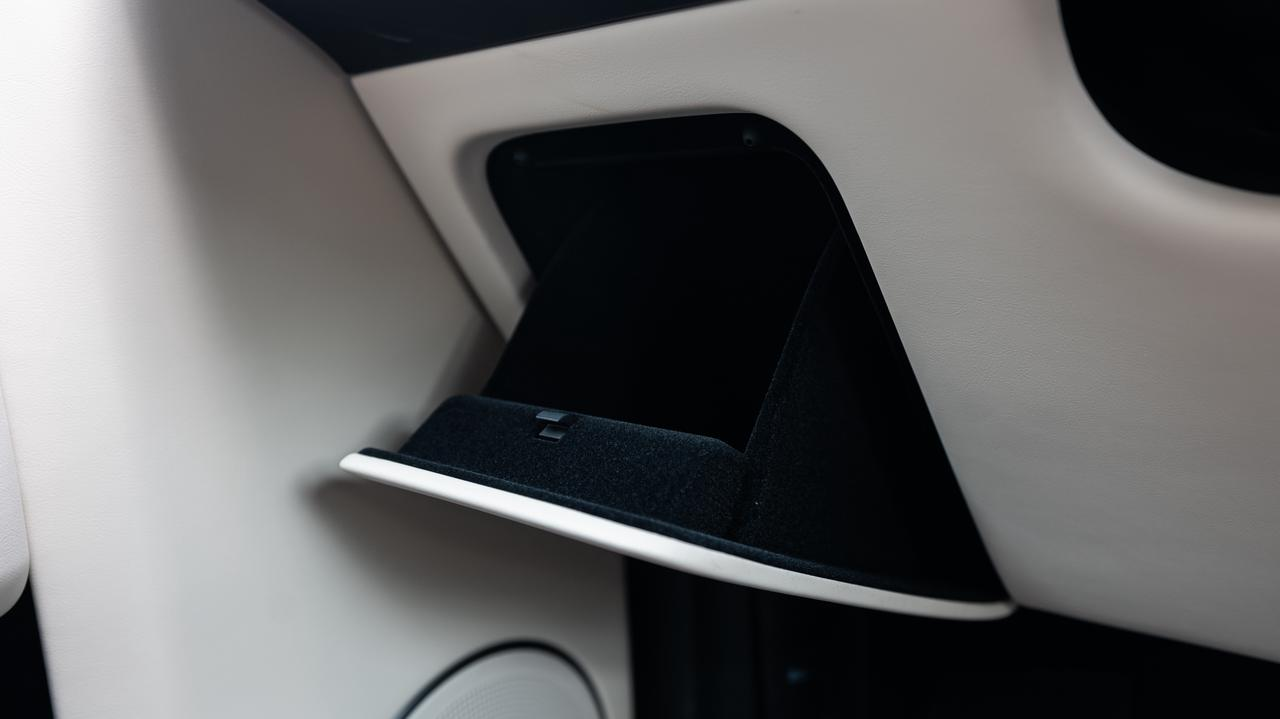
At the edge of the steering wheel, L8 also used Nappa, and this area is also designed in a rounded rectangular shape.
Panoramic sunroof

L8 has two versions of the sunroof. Because the Max version has an additional folding screen in the rear, the total area of the Max sunroof is slightly smaller than that of Pro:
-
L8 Max front sunroof area is 0.3 square meters, rear sunroof area is 0.7 square meters, and the total area is 1 square meter;
-
L8 Pro front sunroof area is 0.33 square meters, rear sunroof area is 0.79 square meters, and the total area is 1.12 square meters;
-
L9 front sunroof area is 0.3 square meters, rear sunroof area is 0.8 square meters, and the total area is 1.1 square meters.
Ambient lighting
The home decoration industry now favors design with no primary lighting and projection light sources, and this trend has been keenly captured by new forces. However, on the L8 and L9, the projection ambient light without primary lighting is built on a foundation that can provide sufficient illumination.

As can be clearly seen from the atmosphere lamp picture in the front row, the atmosphere lamp of L8 mainly provides illumination for the door panels and foot space. At the same time, the projection method will not make the atmosphere lamp conflict with the design. On the contrary, through the Nappa-wrapped door panel, the embellishment effect of the atmosphere lamp will form a very soft and gradual transition.

The ideal L8 uses a 256-color atmosphere lamp design, and users can freely adjust the light color on the “vehicle-lighting interface” color palette.




Electric Suction Door

During static experience, we found a small problem that needs to be optimized in the front driver and co-pilot doors of L8. When we close the door with force, there will be a “bang” sound.
At first, we thought it was because the vehicle was too airtight, which caused the pressure difference after closing the door, but in fact, this sound can still be heard after opening the window.
We initially determined that the sealing plastic lining inside the door panels is dense and hard, and has the largest contact area with the B-pillar, so it is possible that the sound is coming from the material here, although it could also be due to the fact that it is a non-production version of the car model.
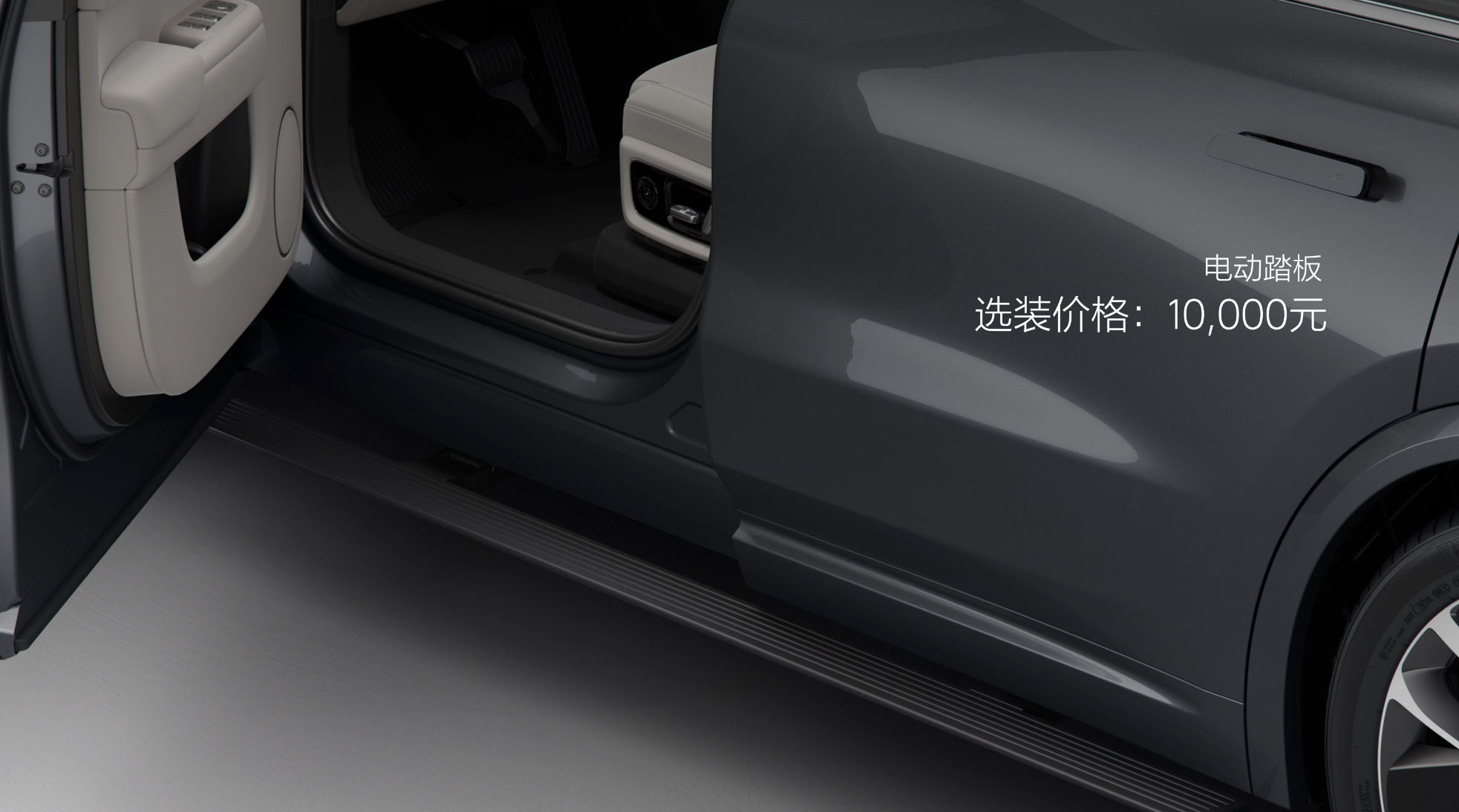
L8 also supports the option of an electric pedal, with an optional price of 10,000 yuan.
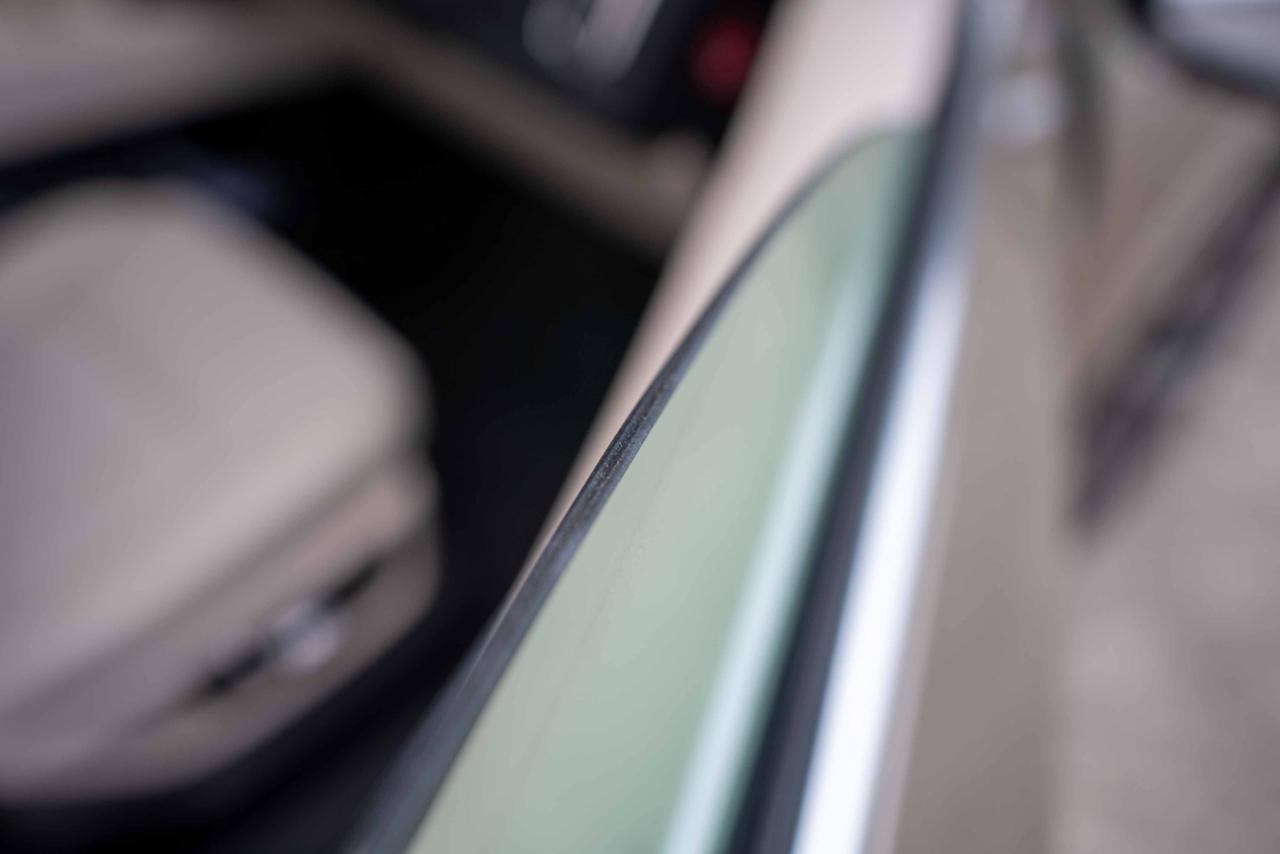

In addition, L8 uses double-layer laminated glass for both the front and rear rows.
Cabin: I want what L9 has!
In fact, there is not much difference in the functionality of the interior between the L8 Max and L9. Therefore, we have specifically compiled a comparison table of the cabin hardware of the ideal car series.

The ideal space is defined by SS Pro/Max in terms of intelligent space, where the only difference between Pro and Max is the lack of a rear screen and accompanying 3D ToF sensors, speaker quantity, and 8155 chip quantity.
HUD
The HUD on the L8 is the same as on the L9 and was extremely impressive when it was first appeared. The Ideal Model also uses this HUD to replace the traditional instrument panel.

This 13.35-inch HUD displays only gear information when parking. After navigation is activated and the vehicle is shifted into drive, simplified navigation information is displayed on the left side of the HUD.
The middle section displays a visual representation of the vehicle, displaying people and other vehicles on the HUD.
The right side displays information such as speed, speed limit, and gear selection.
In our static experience, the HUD’s refresh rate and brightness were both impressive.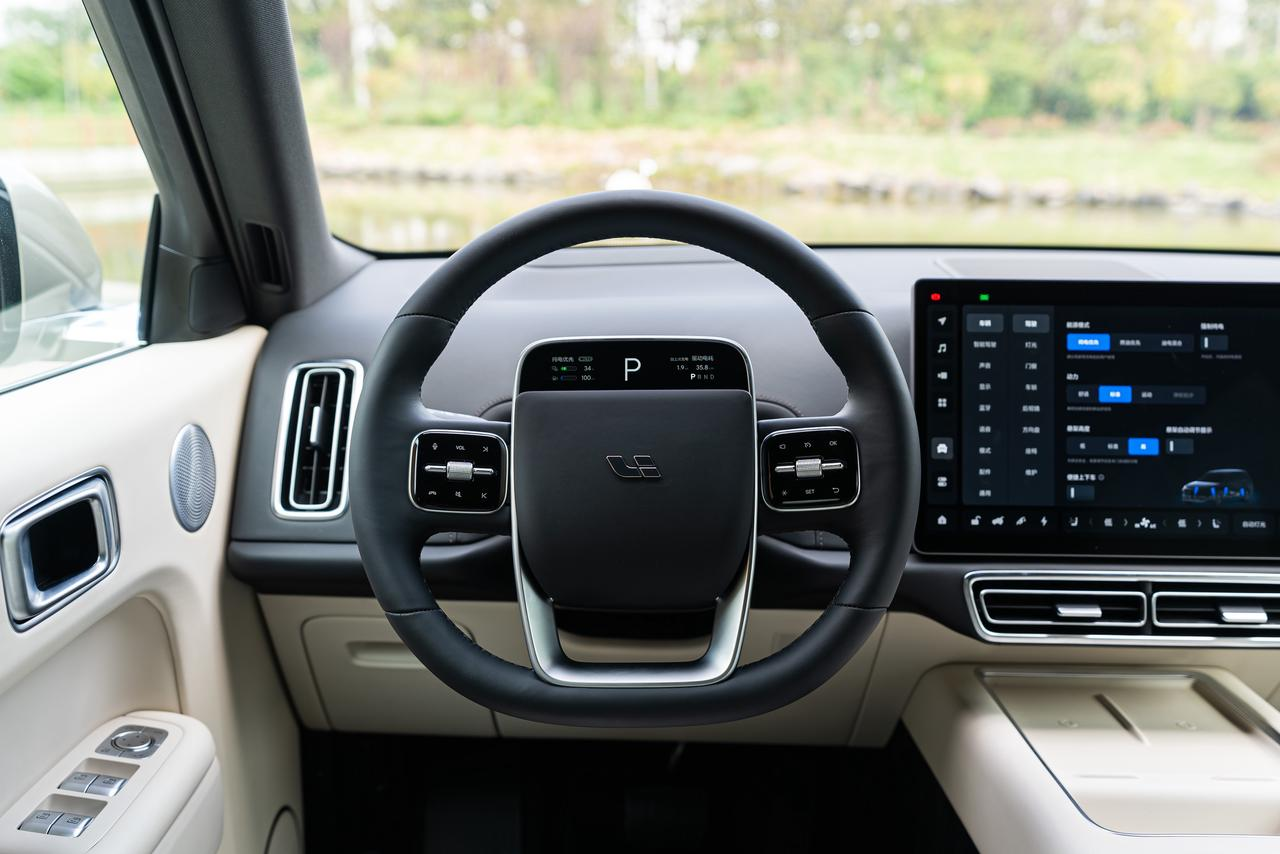
After removing the instrument panel, sitting in the driver’s seat does provide a better view. However, the original position of the instrument panel is covered with bare Nappa leather, which takes some time to adapt to in terms of appearance.
The Differences in LCD, Mini-LED and OLED Screen Materials
According to the article’s rhythm, I will explain several screens and their functions next. However, if you carefully read the beginning of this chapter, you can see that L8 mainly uses LCD screen material on its screen, not OLED screen like L9, which is basically consistent with the Ideal ONE, while the Mini-LED material is used for the safety driving interaction screen on the steering wheel.
Even the names of LCD, Mini-LED, and OLED screen materials are enough to make people dizzy, so in this section, I will explain the working principles and characteristics of these materials.
Firstly, display screens are broadly divided into two types: LCD (Liquid Crystal Display) and LED (Light-Emitting Diode).

Simply put, the base of an LCD screen is a luminous LED light strip, which works continuously when the screen is lit, and the light is regulated through the liquid crystal and converted into color through the filter.
Advantages:
- Due to its working principles, LCD has a longer lifespan.
Disadvantages:
- Although the liquid crystal in the middle of the screen does not work when displaying a pure black image, there is still light leakage, so the pure black of the LCD actually has gray tones and brightness. The difference in visual experience is that dark colors, especially black, are not dark enough and the contrast is not high enough;
- Due to the presence of a backlight layer in the LCD, backlights tend to leak around the edges of the panel after assembly, such as in smartphones and tablets;
- Even when the LCD screen is displaying black, the backlight is still working, so the power consumption is slightly higher;
The working principle of Mini-LED is the same as that of LCD, except that the backlight of the base has changed from a whole to multiple areas, allowing the backlight of specific areas to be turned off when showing black. Theoretically, the more partitions of the backlight of the Mini-LED screen of the same size, the better the display effect.
 The display principle of LED (Light Emitting Diode) is simple. You may have seen electronic signs made of LED bulbs at night when passing by roadside restaurants or printing shops. The letters inside are composed of LEDs with high brightness.
The display principle of LED (Light Emitting Diode) is simple. You may have seen electronic signs made of LED bulbs at night when passing by roadside restaurants or printing shops. The letters inside are composed of LEDs with high brightness.
OLED (Organic Light Emitting Diode) is a miniature LED in which red, green, and blue fluorescent materials are printed on the substrate through printing technology. In principle, it belongs to “pixel-level” partition backlighting.
Advantages:
- OLED has inherent advantages in contrast, brightness, and response time compared to LCD (Liquid Crystal Display);
- Due to the difference in principle and structure, OLED screens are relatively thin.
Disadvantages:
- The lifespan of these organic fluorescent materials is not long, and the failure of specific color change in specific areas due to the inconsistency of usage time among the three colors is the most common problem with OLED, also known as screen burn-in.
- OLED uses PWM (Pulse Width Modulation) dimming, and the frequency cannot be too high, which may cause visual fatigue for some visually sensitive people.
Safe Driving Interactive Screen
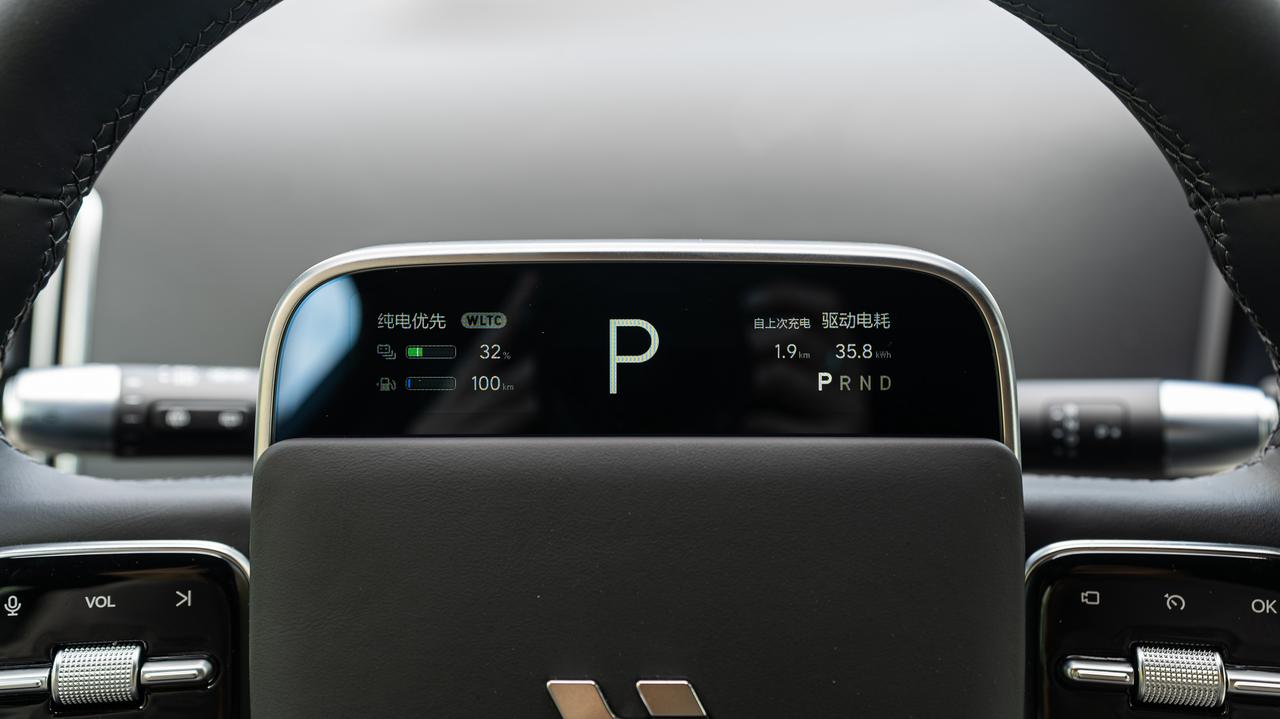
Let’s talk about the Mini-LED (light-emitting diode) safe driving interactive screen, which has a low profile on L8 and L9. The 4.82-inch size is indeed very small, but it uses 186 partitions, which looks good in actual use.
The left side of the screen displays driving status, battery level, and range status, while the middle displays gear or speed information. The right side displays driving distance, power consumption, and other information.
After scrolling down, there are adjustments for the position of the head-up display (HUD), power mode, and suspension state.
Dual Screen
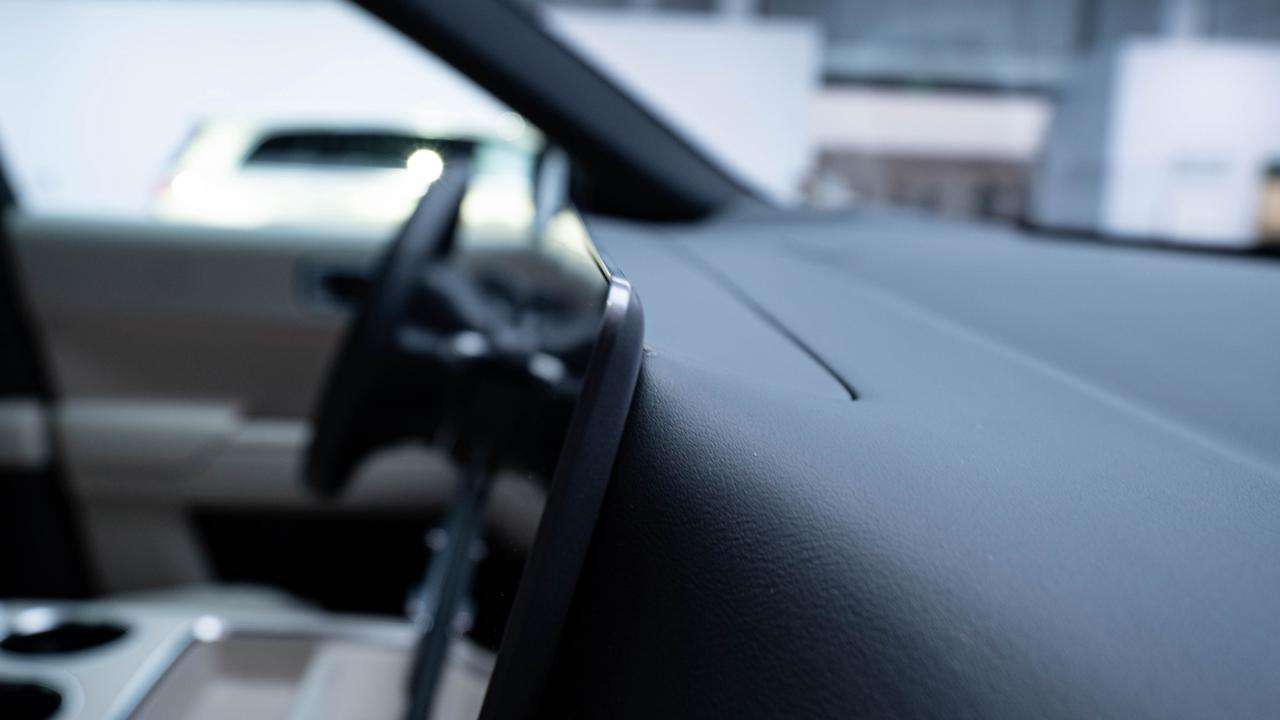

L8 uses LCD (Liquid Crystal Display) materials on the integrated central control screen, and you can see that there is a significant difference in thickness between it and the L9 screen, which is a manifestation of the thickness difference between LCD and OLED screens.However, the two 15.7-inch LCD screens, with a resolution of 2880 × 1620, have reached the 3K level, and also support Type-C wired projection, with a refresh rate of 60 Hz. The screen border is also very narrow, with a screen ratio of 82%.

Currently, the L8 and L9 car machines have basically the same functions, but the L8 currently only has a black theme.
The main screen of L8 can be divided into three areas: the L-shaped dock bar formed by the left and bottom parts, the top information display bar, and the middle function display area.
The vertical arrangement in the L-shaped dock bar is for frequently used functions, where commonly used functions can be quickly switched, and the horizontal arrangement is for vehicle-related settings such as air conditioning and driving modes. The top displays basic information such as time and network.
The middle information display area is designed with card-style, which can be horizontally dragged, and each person can adjust the order of different function cards according to their own needs.

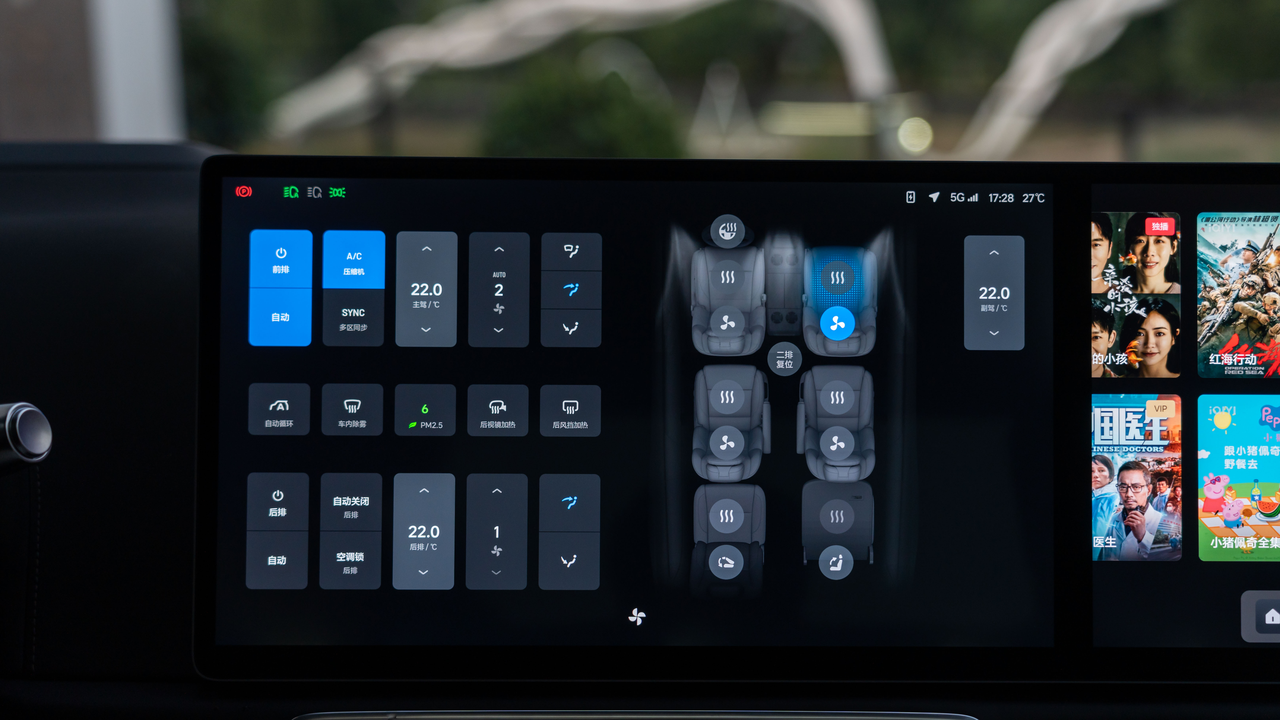
Interestingly, IDEAL has specifically set up a screen for the seat and air conditioning on the ONE, while on the L8 and L9, these functions are integrated into the bottom dock bar.

Moreover, L8 also added a function of one-click reset for the second-row seats.

What’s more interesting is the visual model display of L8, which can dynamically respond to the actual status of the vehicle in real-time on the screen visualization, such as the position of the car window, the state of the door, the state of the lights, and the state of the front hood as shown in the figure.
The layout of the co-driver’s screen is still the same as that of ONE, mainly responsible for the control of audio and video entertainment.
Rear Screen

The size and parameters of the L8 rear screen are the same as those of the connected front screen.

On the L8, we can enjoy the fun of synchronously playing the same screen on three screens. From the actual scenario, this situation is actually most suitable for singing K in the car, and each “soul singer” can have their own prompter.

The rear screen is also equipped with the same 3D ToF sensor as the L9, which can recognize hand gestures and movements. By moving the hand left and right, making a fist, and stretching the hand, cursor movement and clicking can be achieved. However, there is still room for improvement in the usability of this system on the L8.
Audio
In terms of audio, the L8 Max has the same number of speakers as the L9, but the total power is slightly lower at 240 W. They both support 7.3.4 Dolby panoramic sound.

Although the L8 Pro version can maintain the same power as the L8 Max version, it has two fewer speakers. This is mainly because there is no rear screen, and the two 4D seat speakers arranged in the L8 Max and L9 rear seats are also removed.

Overall, most of the functions of L8 Max’s cabin are similar to those of L9, but there are differences in speaker power and screen material.## Assisted driving: Three-step Prototype
Apart from the differences in intelligent space, L8 Max/Pro also has hardware differences at the assisted driving level. For the L8 model, it is divided into two versions, AD Pro and AD Max.
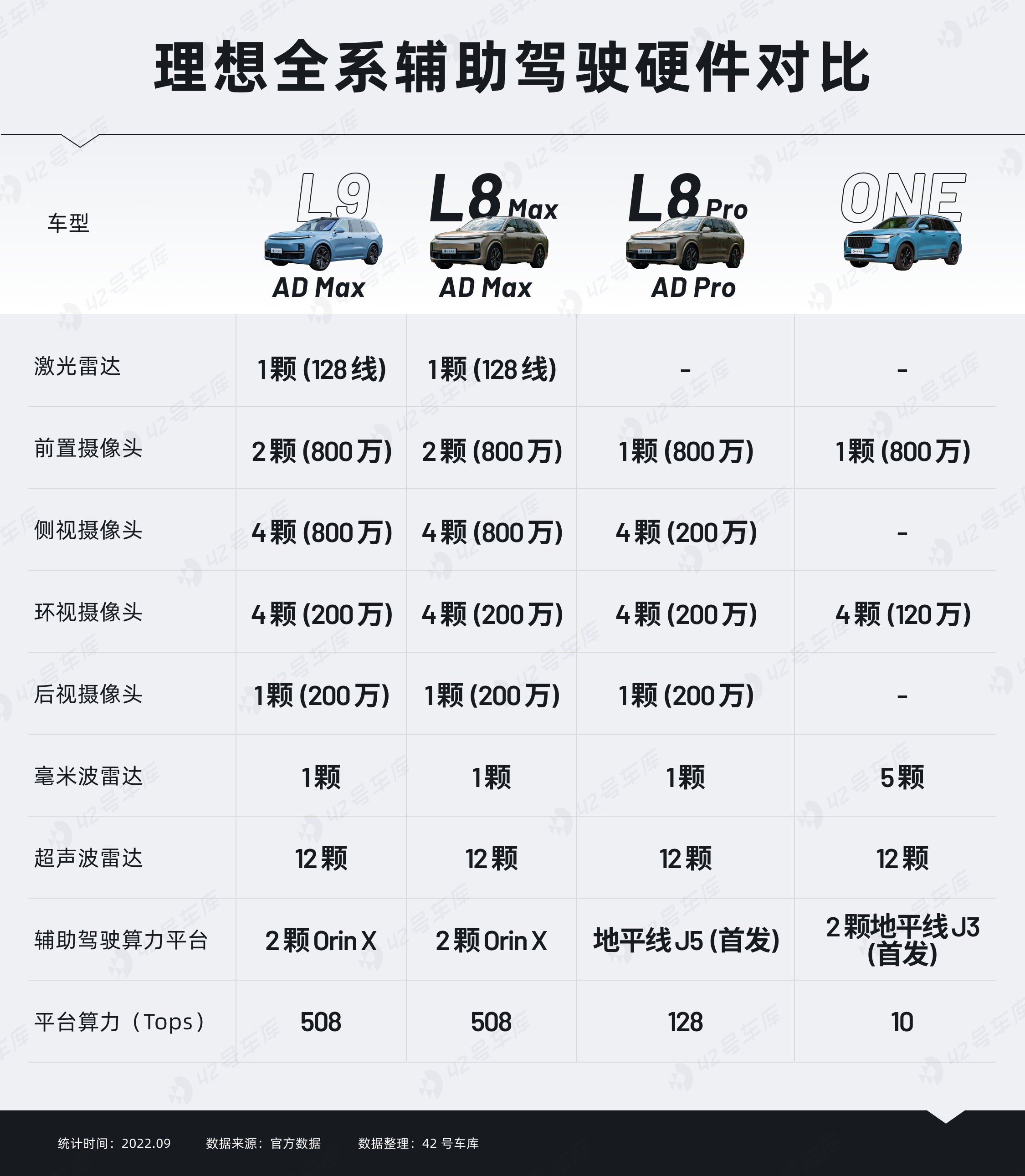
As seen, the AD Max has a more powerful perception hardware and computing platform to provide hardware support for higher-order assistance in the future. At the launch event, Li Xiang himself emphasized achieving L4 by 2025.
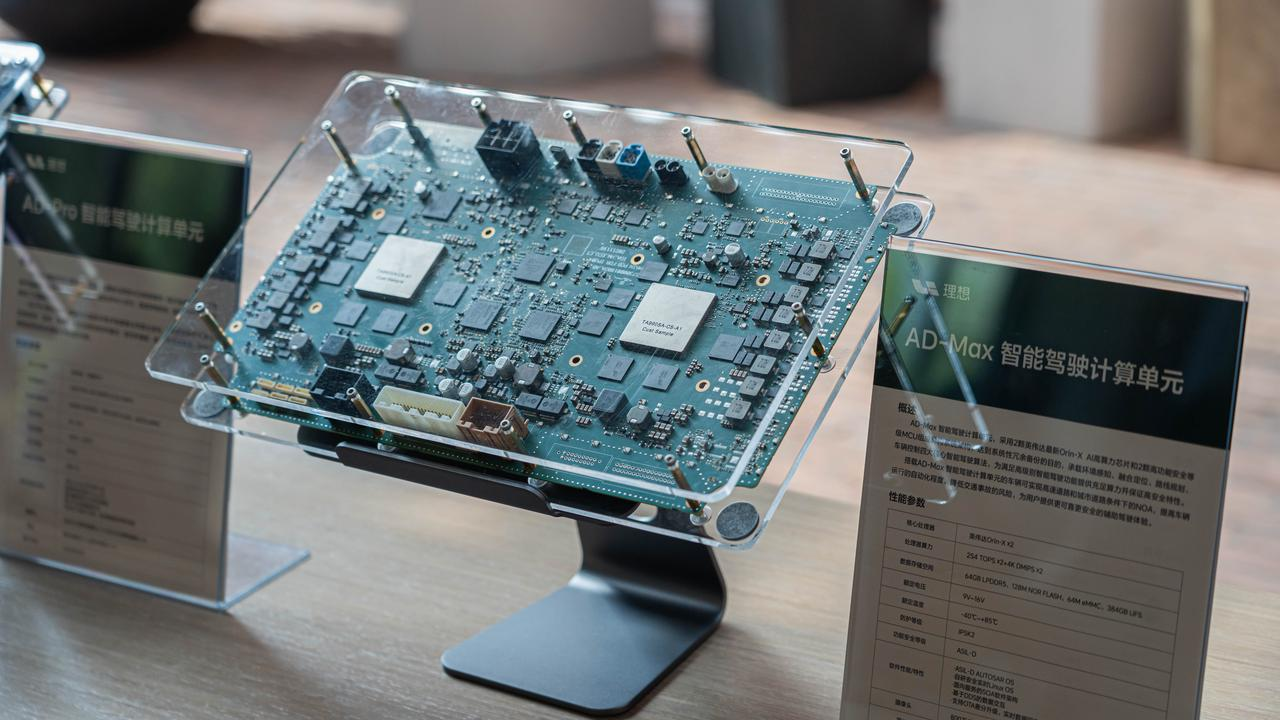
As a configuration that highlights the determination of assisted driving in the flagship new energy vehicle, Lidar has almost become a standard hardware.
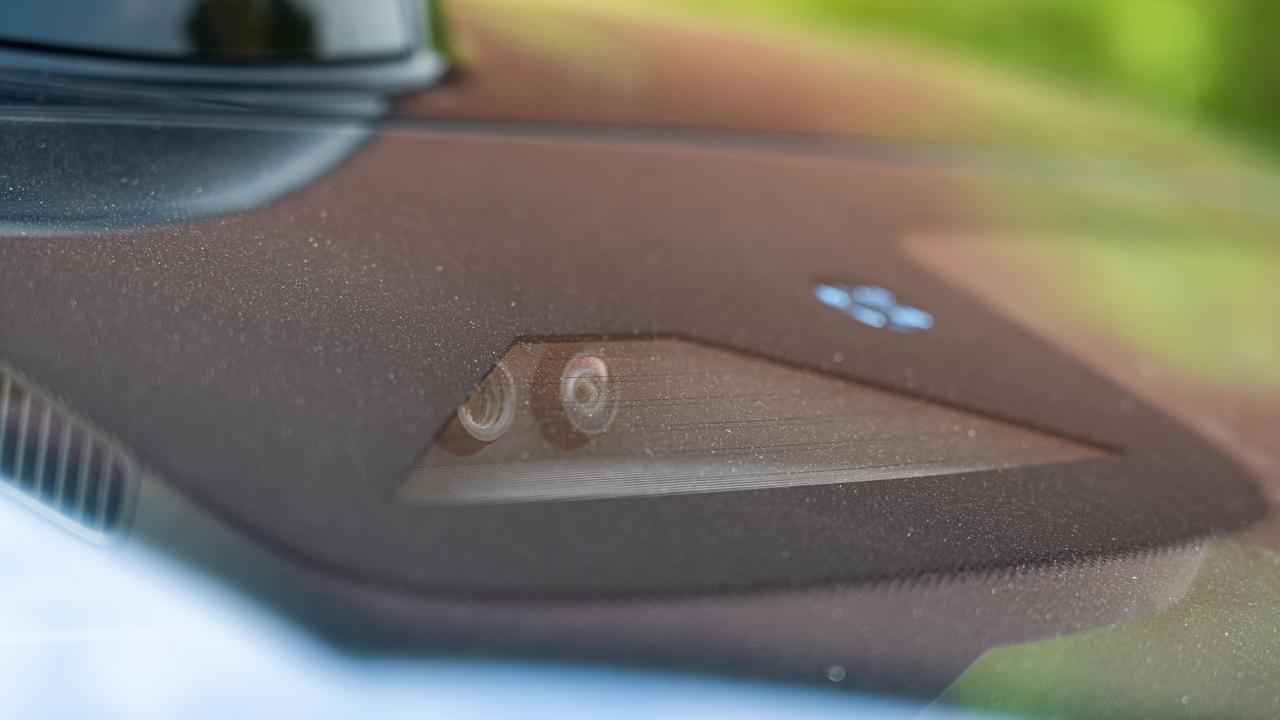
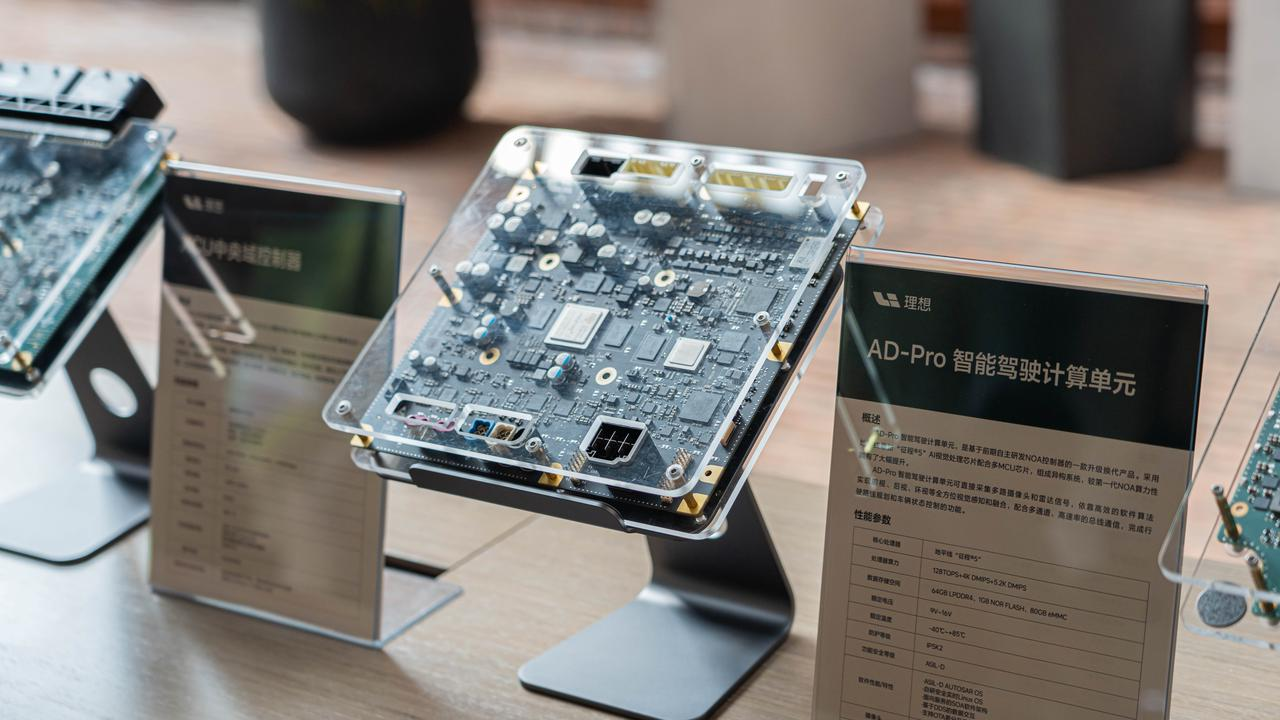
The AD Pro equipped on the L8 Pro, using the J5 chip from Horizon Line for the first time, chooses the visual route. The software algorithm of this solution is completely derived from the J3 of the 2021 model Ideal ONE.
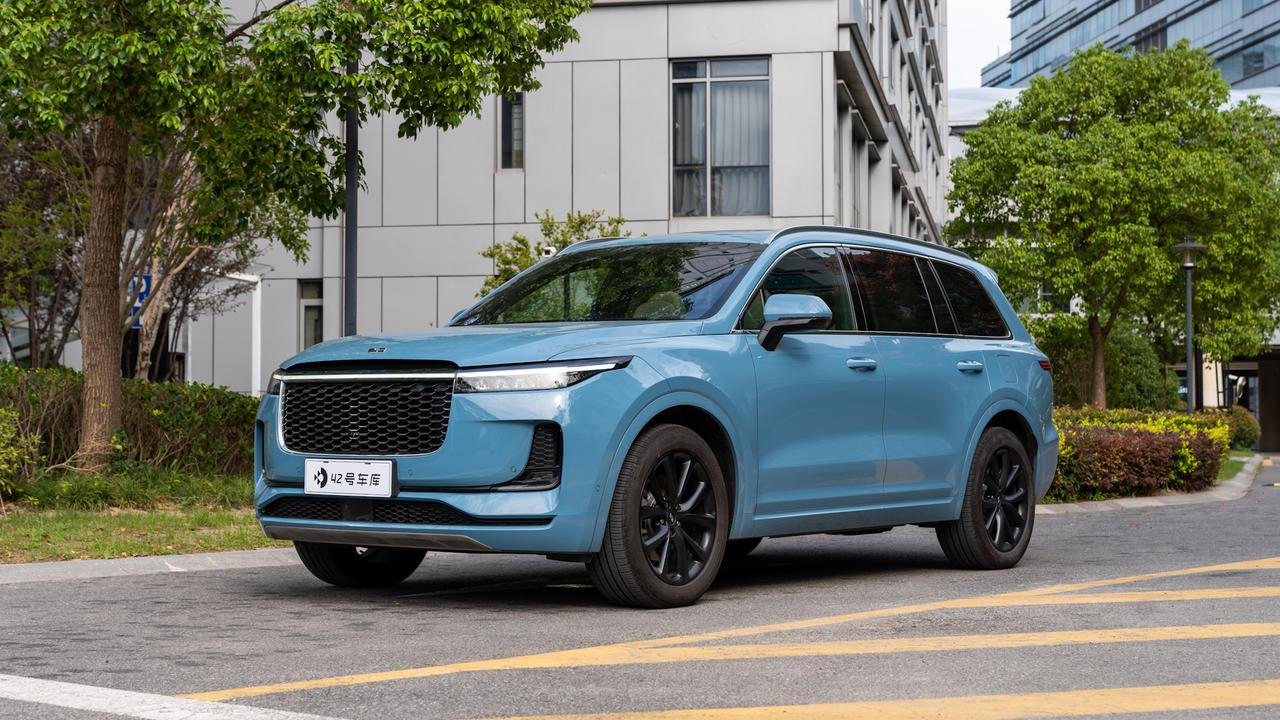
Why do I say that Ideal’s assisted driving is a very typical three-step strategy?
On the oldest ONE, Ideal realized basic assisted driving through Mobileye Q4. In the 2021 Ideal ONE, it realized algorithm development through Horizon Line’s J3 and implemented NOA function. In L8 Max, L9, higher-order assisted driving will be realized through stronger perception ability and computing power. The self-developed algorithm based on J3 will continue to be optimized, and it will continue to grow on the J5 of L8 Pro.
From the perspective of strategy and actual effect, Ideal is a stable player in the field of assisted driving, and we are very much looking forward to experiencing the new AD Max platform.
Driving Experience: Awaiting Test
Since this is a static experience, we did not have the opportunity to drive the L8, but from the specifications, the L8 and L9 are basically identical.

If you look carefully at the table, you will notice that we have marked two different battery capacities. This is because the Ministry of Industry and Information Technology’s test data is based on battery capacity calculation at 1C discharge rate, which is smaller than the official capacity specification.
What is interesting here is that although the same powertrain is used for L8 and L9, L8 has a slightly smaller battery capacity of 2 kWh, resulting in a 5 km difference in the CLTC range. However, in the case of the same tank size, the total CLTC range of L8 still matches that of L9. This may be due to slight differences in energy consumption after downsizing.

We will conduct a dynamic test drive of the L8 and also compare the energy consumption of the 2021 Ideal ONE with the L8 to see how much improvement L8 has made in energy consumption compared to ONE.
Conclusion
After reading the entire article, you will find that although the L8 is the successor product of ONE, it is almost indistinguishable from L9 in terms of appearance, interior, cockpit, assisted driving and power configuration. And at a price that is 60,000 to 100,000 yuan cheaper than L9, it is only 10,000 to 50,000 yuan more expensive than ONE.
The improvement in product strength of the L8 over ONE is significant, almost making up for all of ONE’s shortcomings. There have also been significant advancements in four-screen interaction and assisted driving.
However, this has raised new concerns about the similarity between L8 and L9. If we have to find differences in functions, those would be the small table panel in the rear, the footrest for the boss’s seat, and the larger third-row space.
Will space become the core difference in future car models? This requires a long verification process.Although our editorial department generally has high sales expectations for L8, our argument actually centers around “Will L8 erode the customer base of L9, forming internal competition, or will both flower beautifully in their own way?“.
We welcome everyone to share their opinions in the comments or under the topic, and in a few months, we’ll verify our own ideas through sales data.
This article is a translation by ChatGPT of a Chinese report from 42HOW. If you have any questions about it, please email bd@42how.com.
